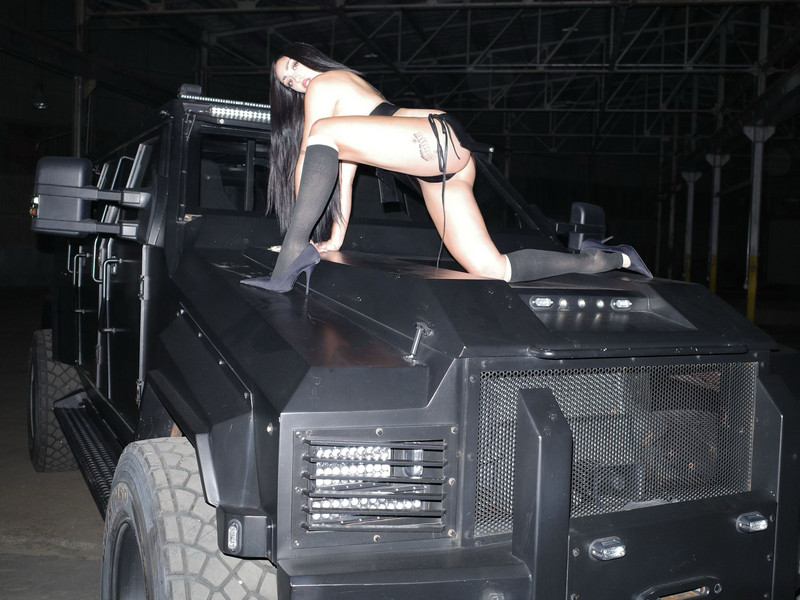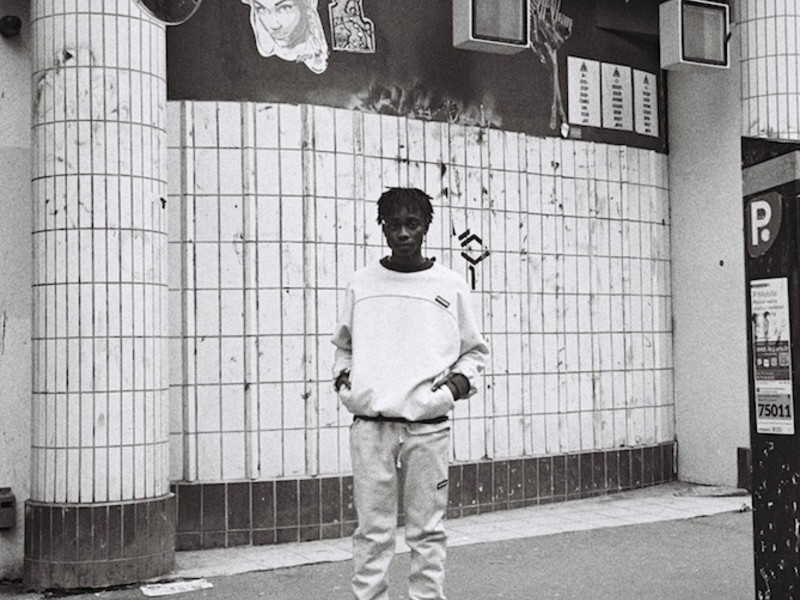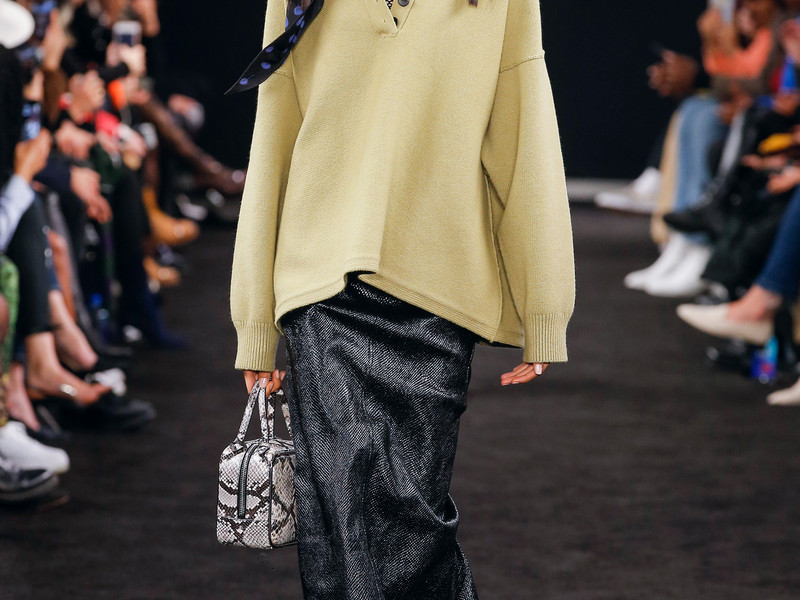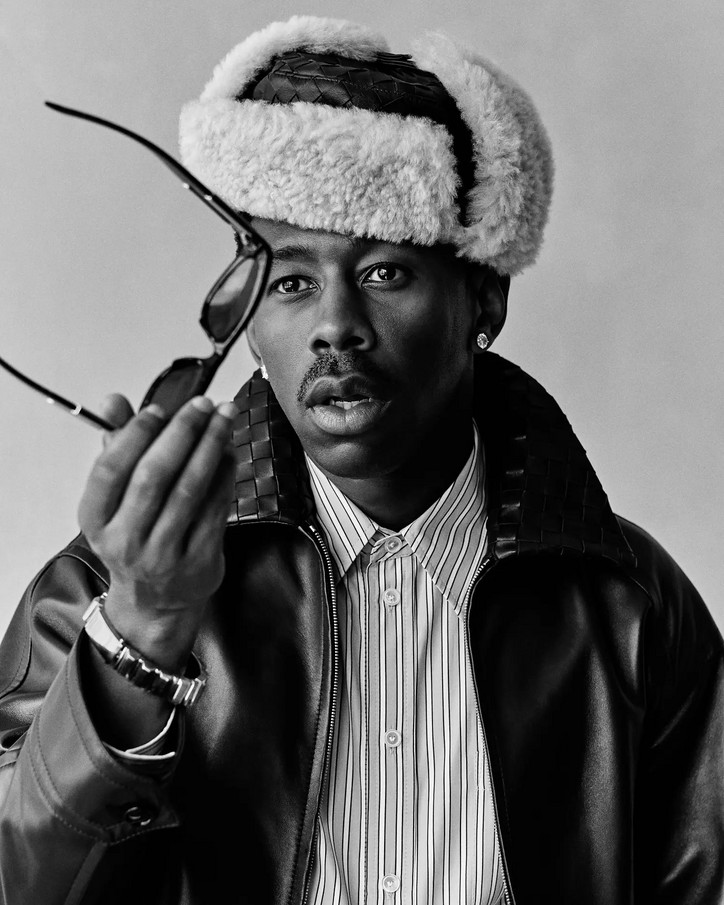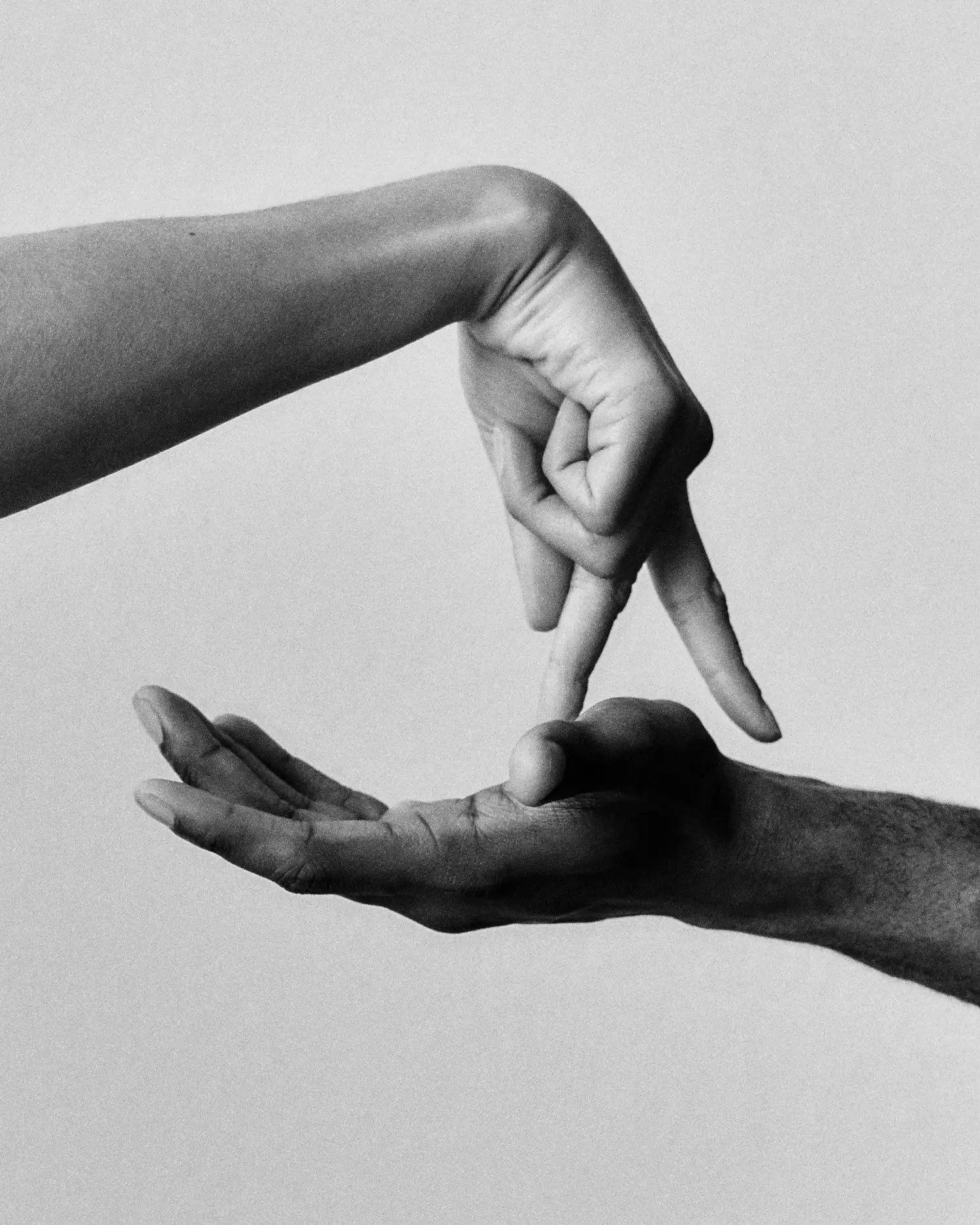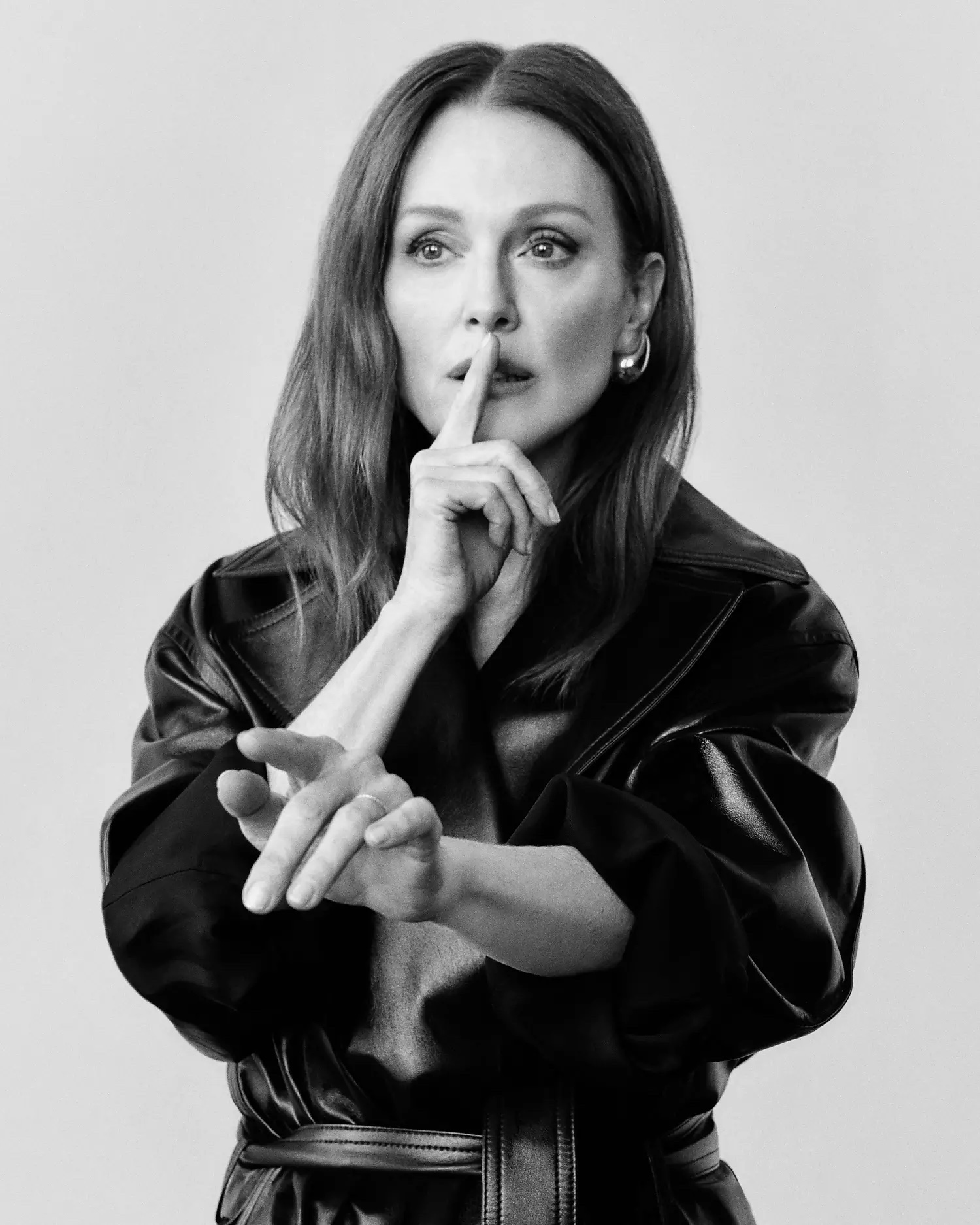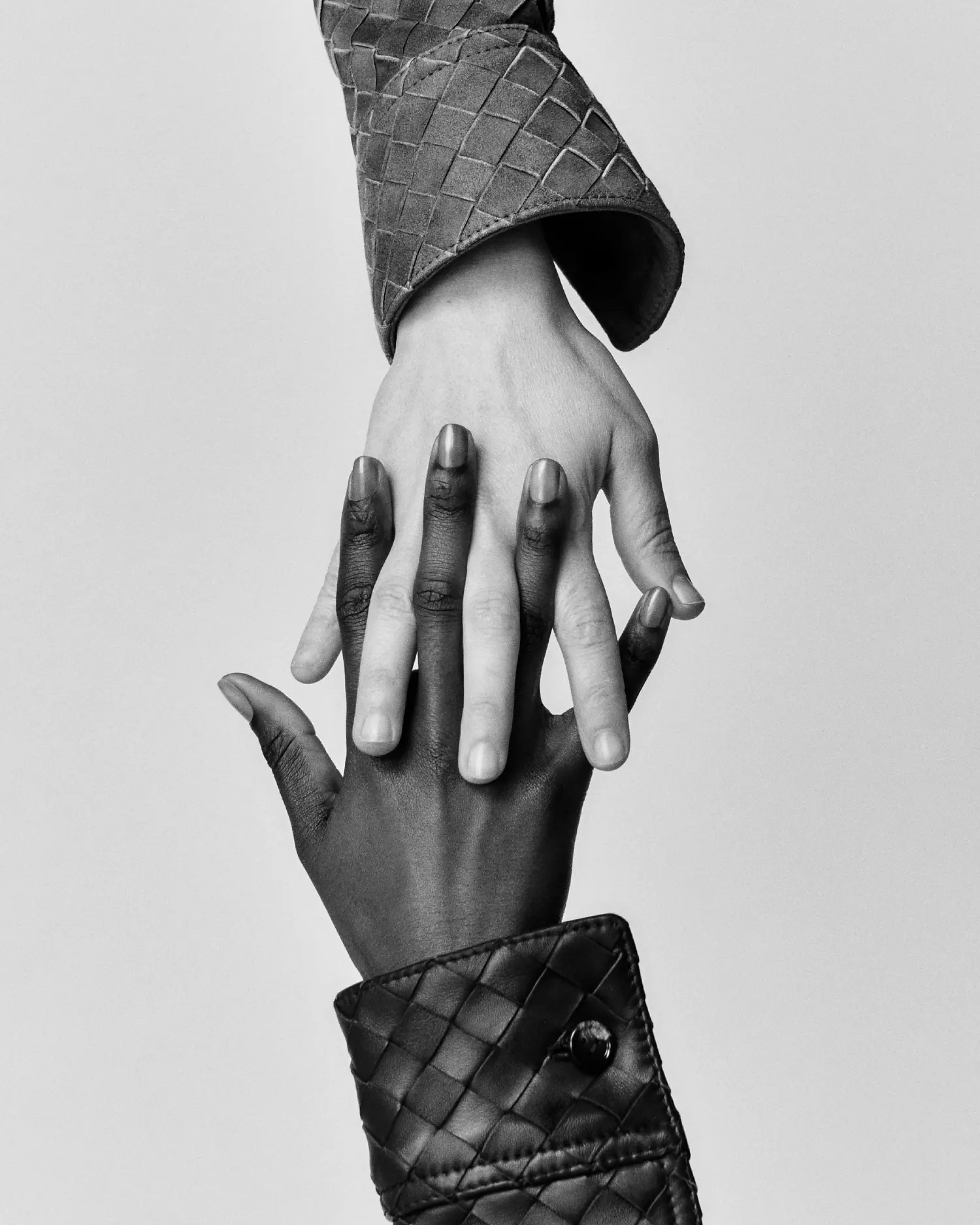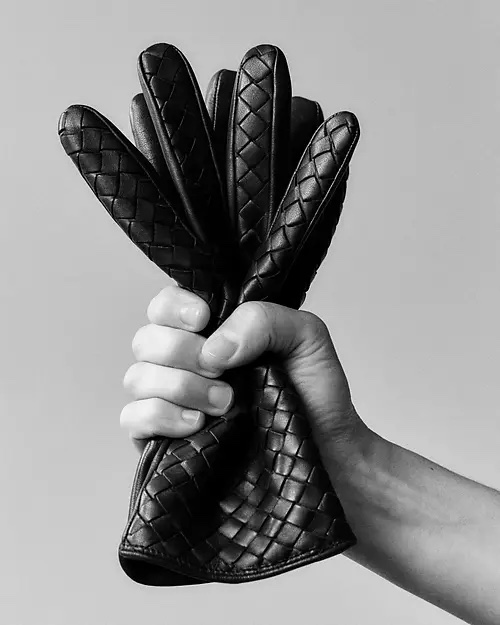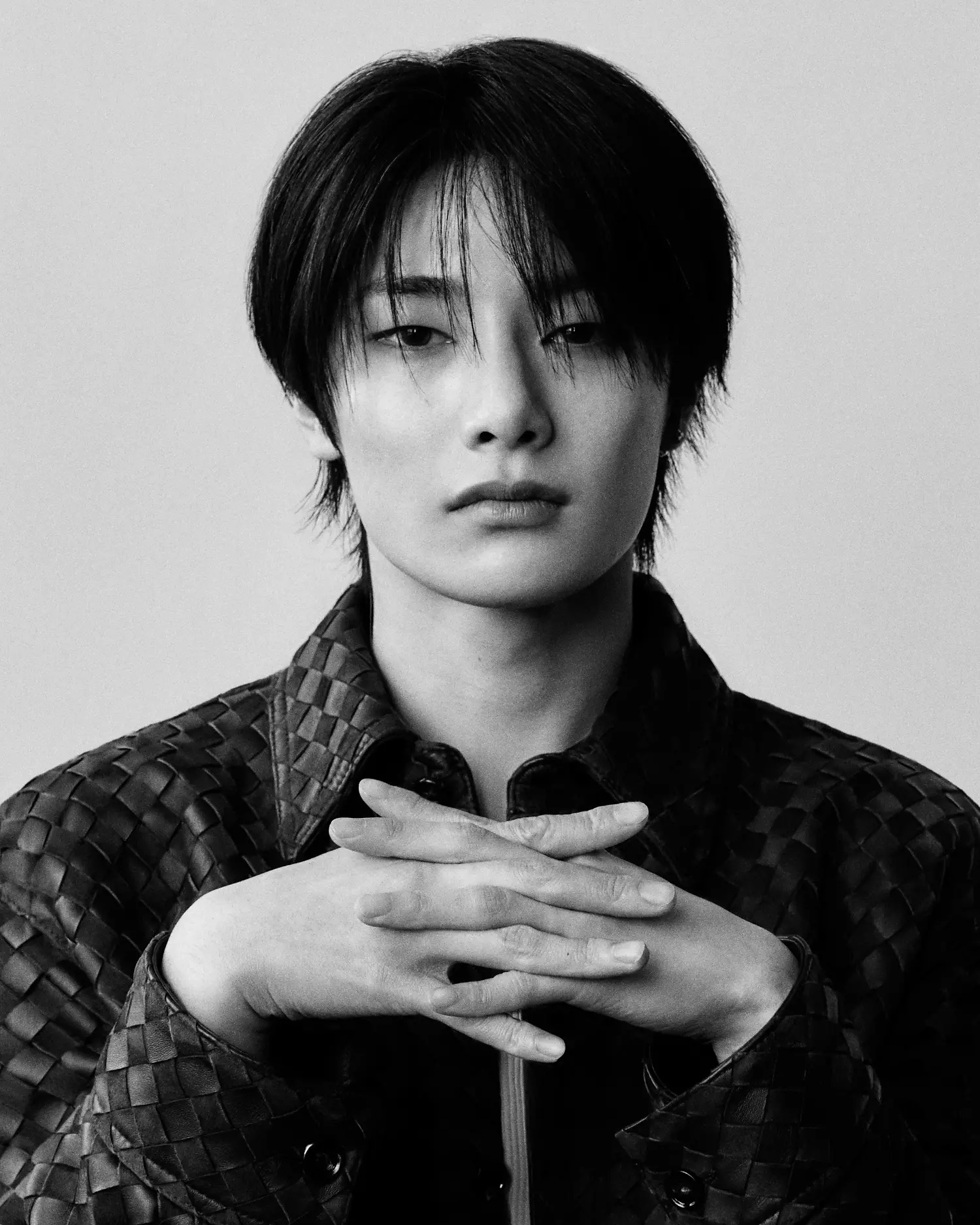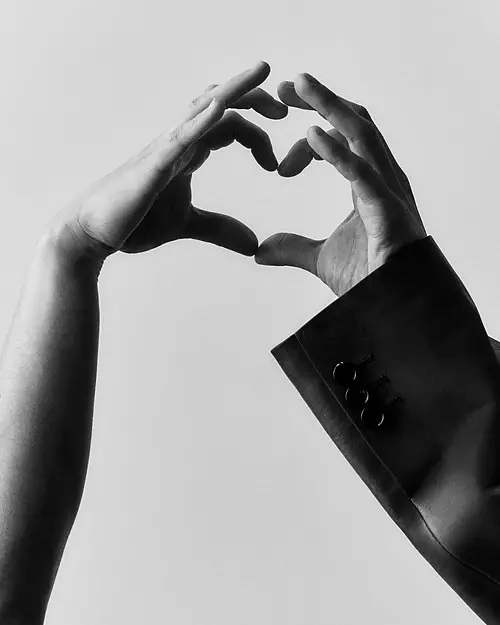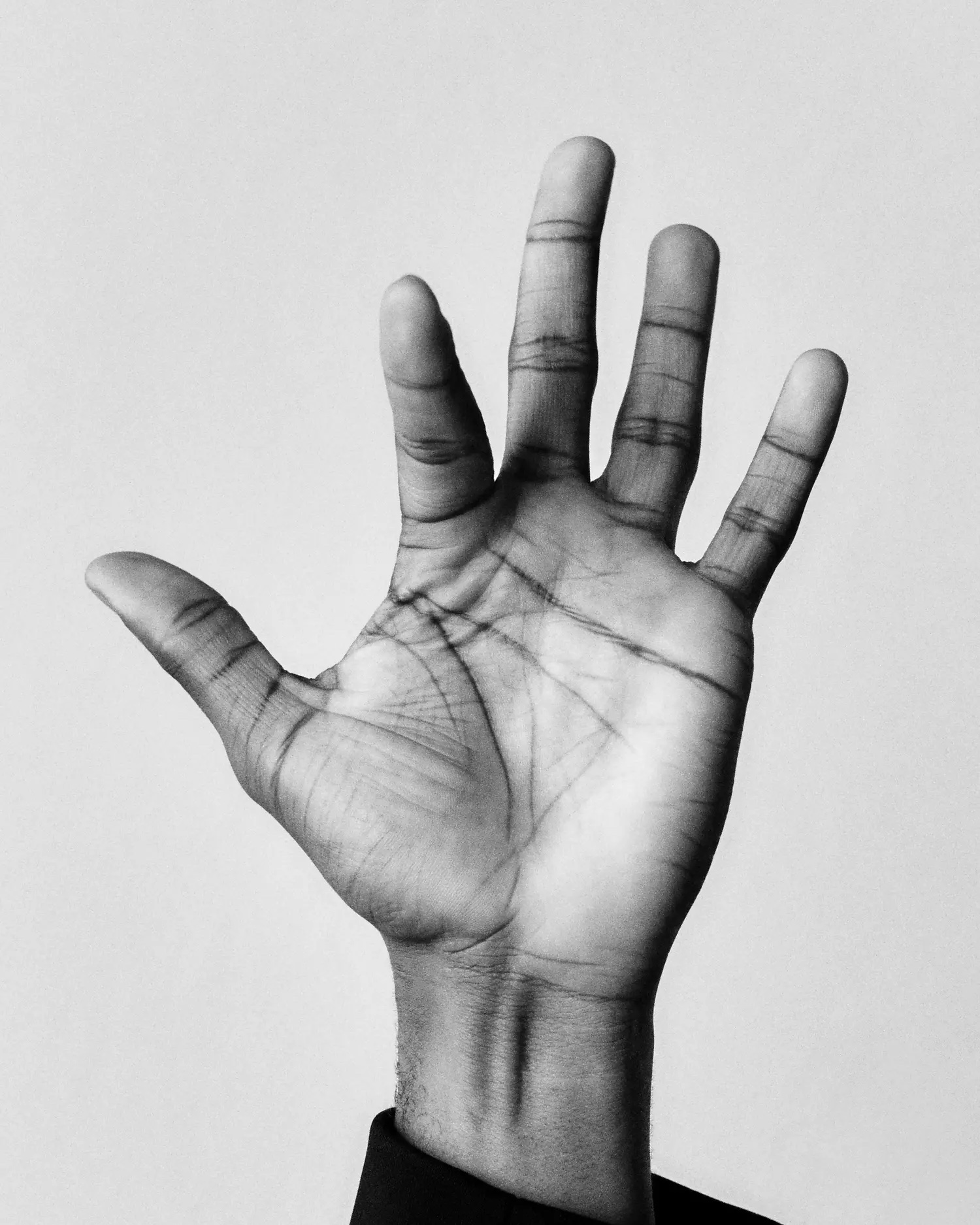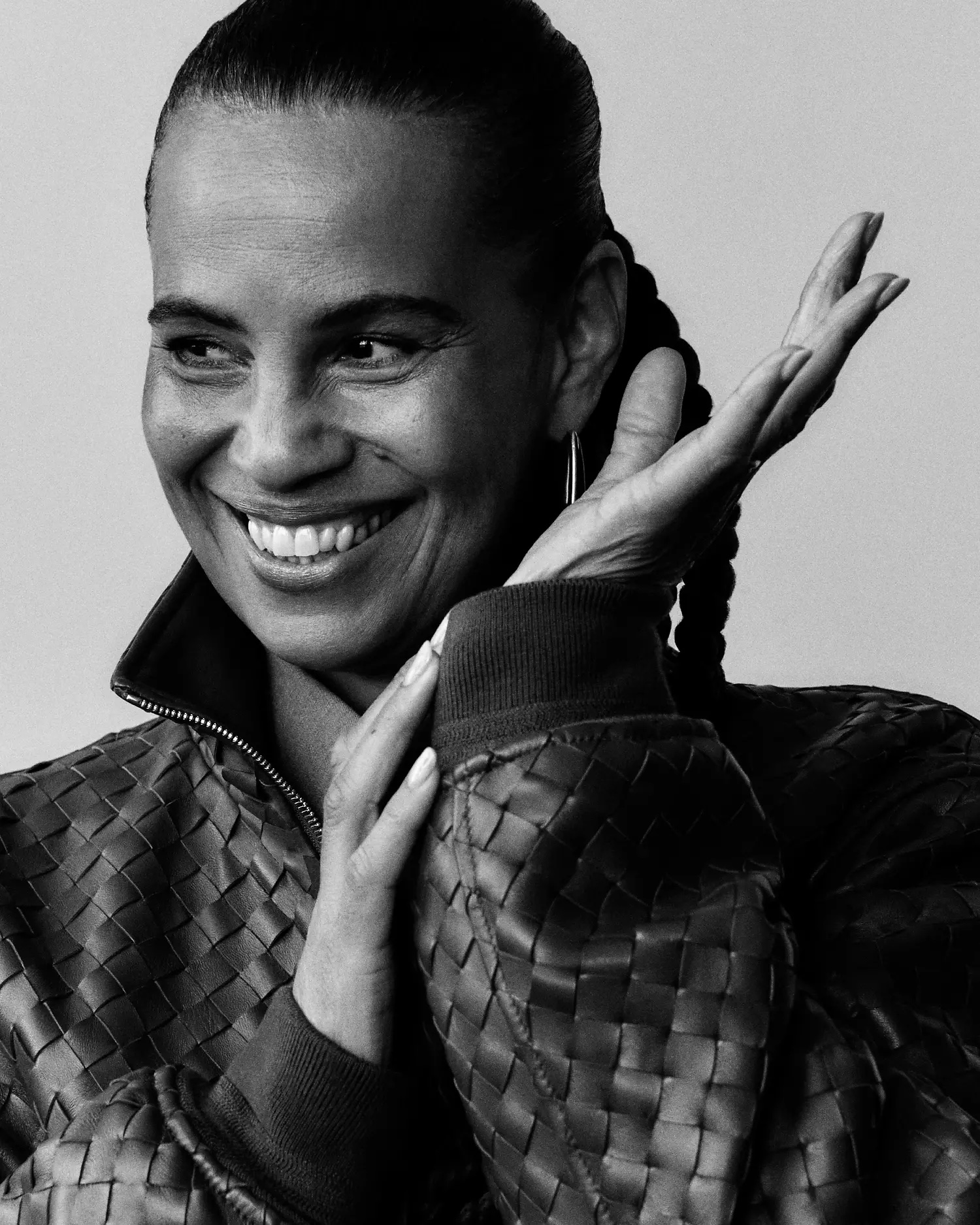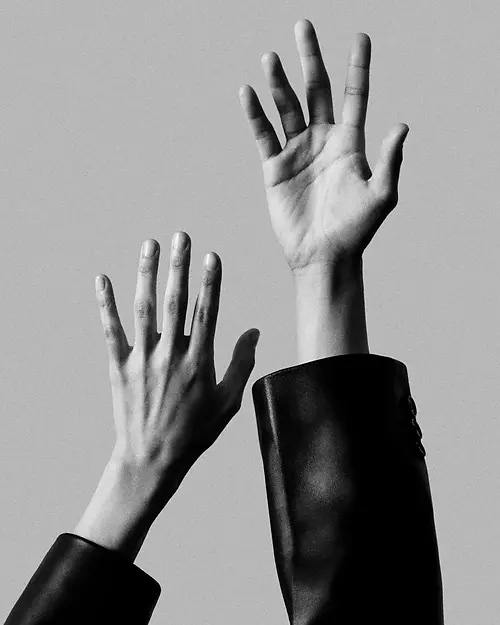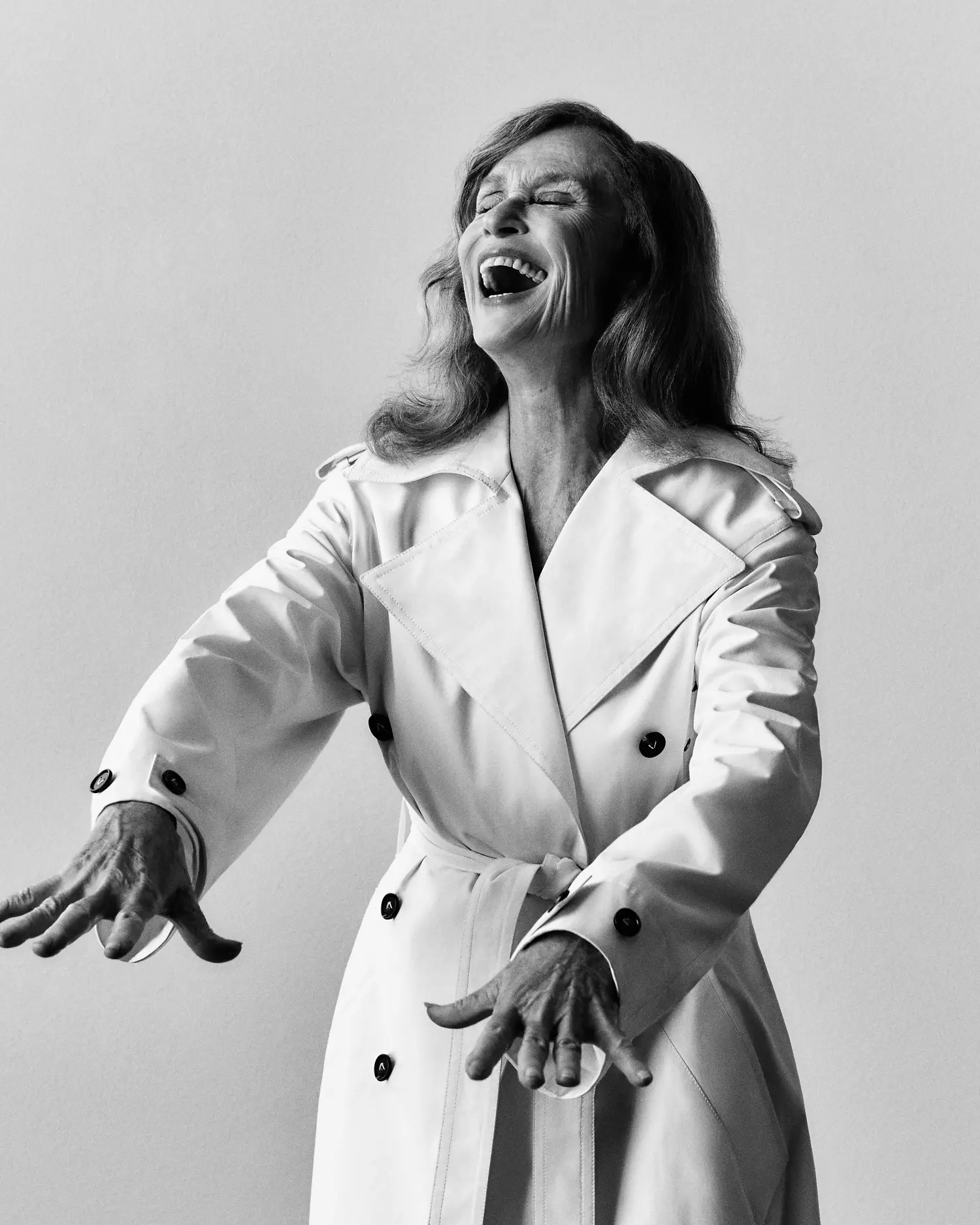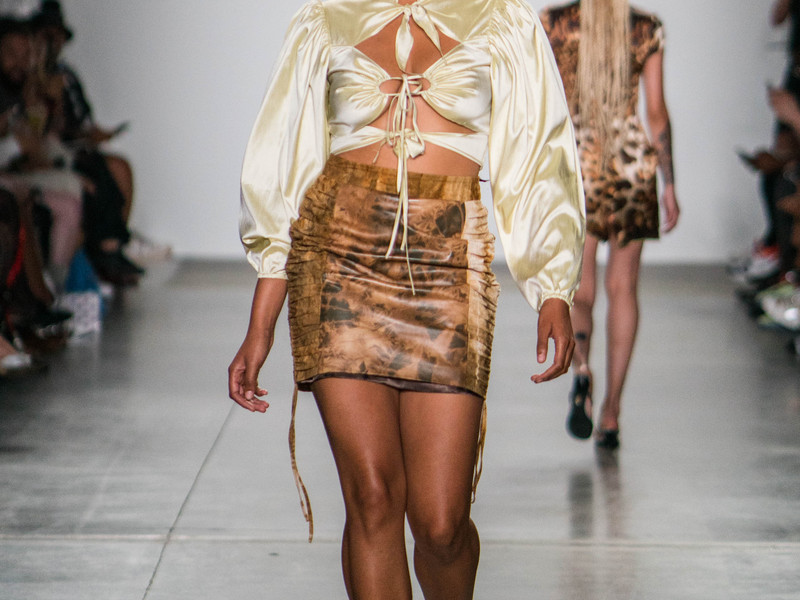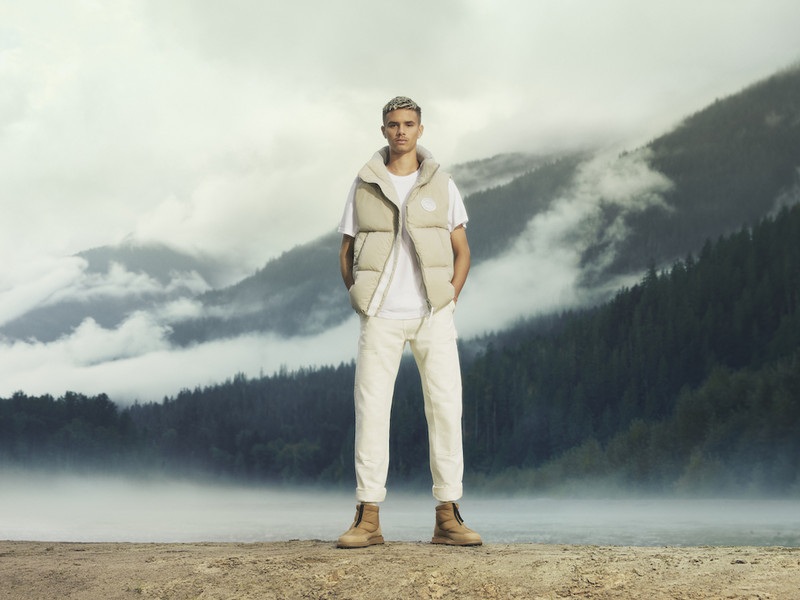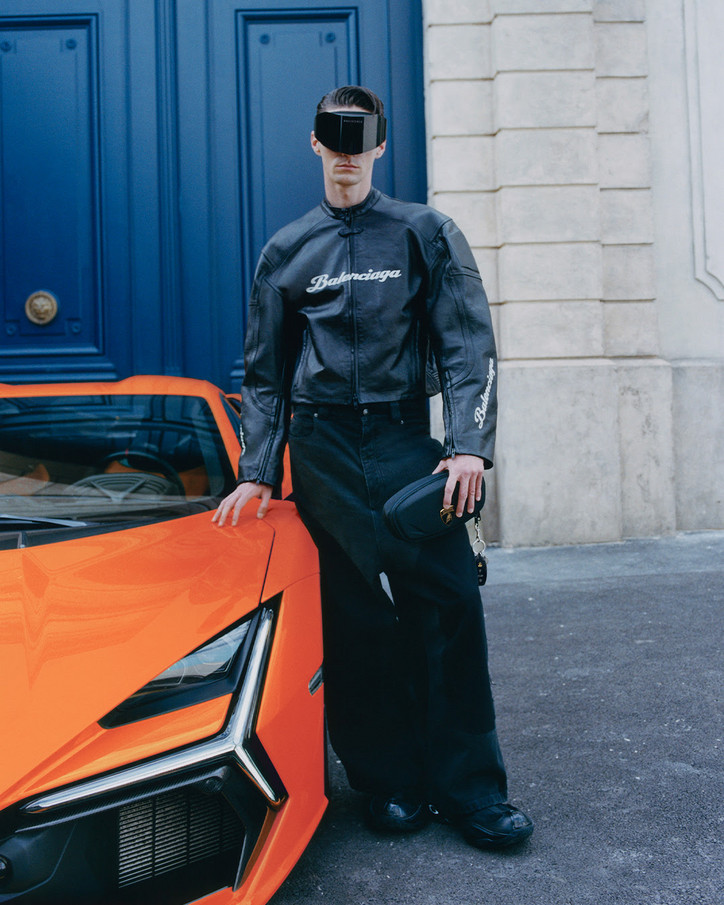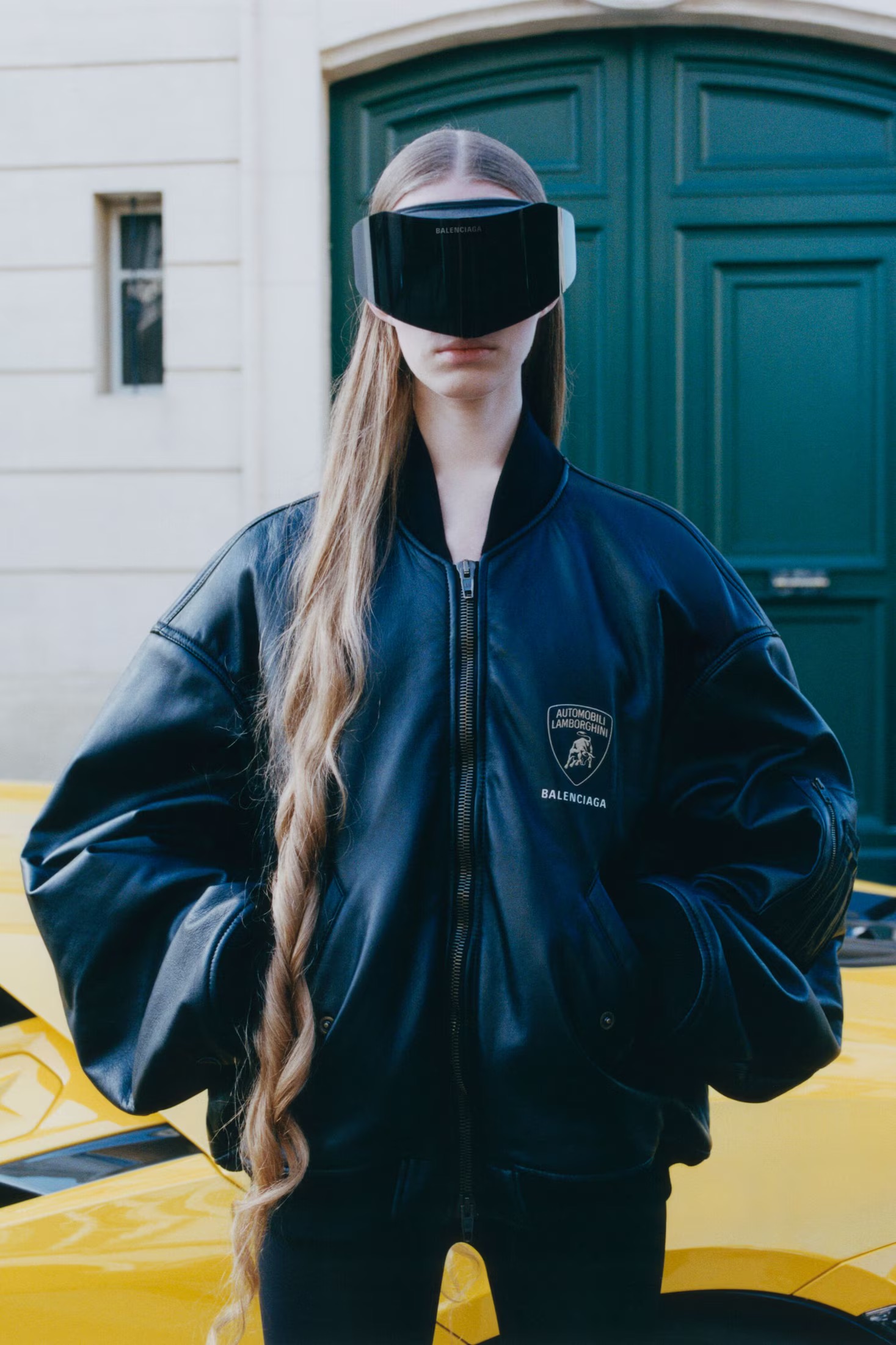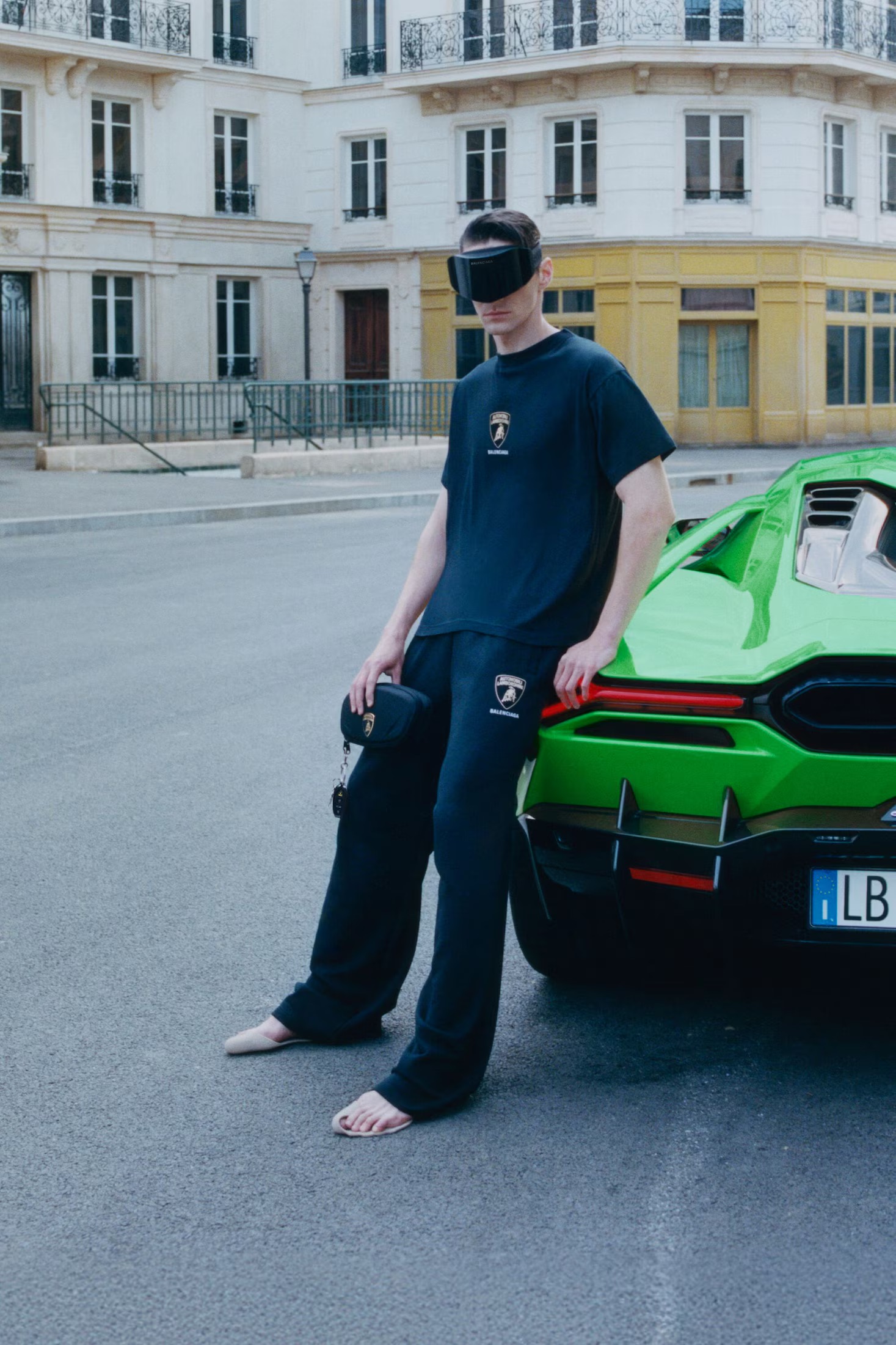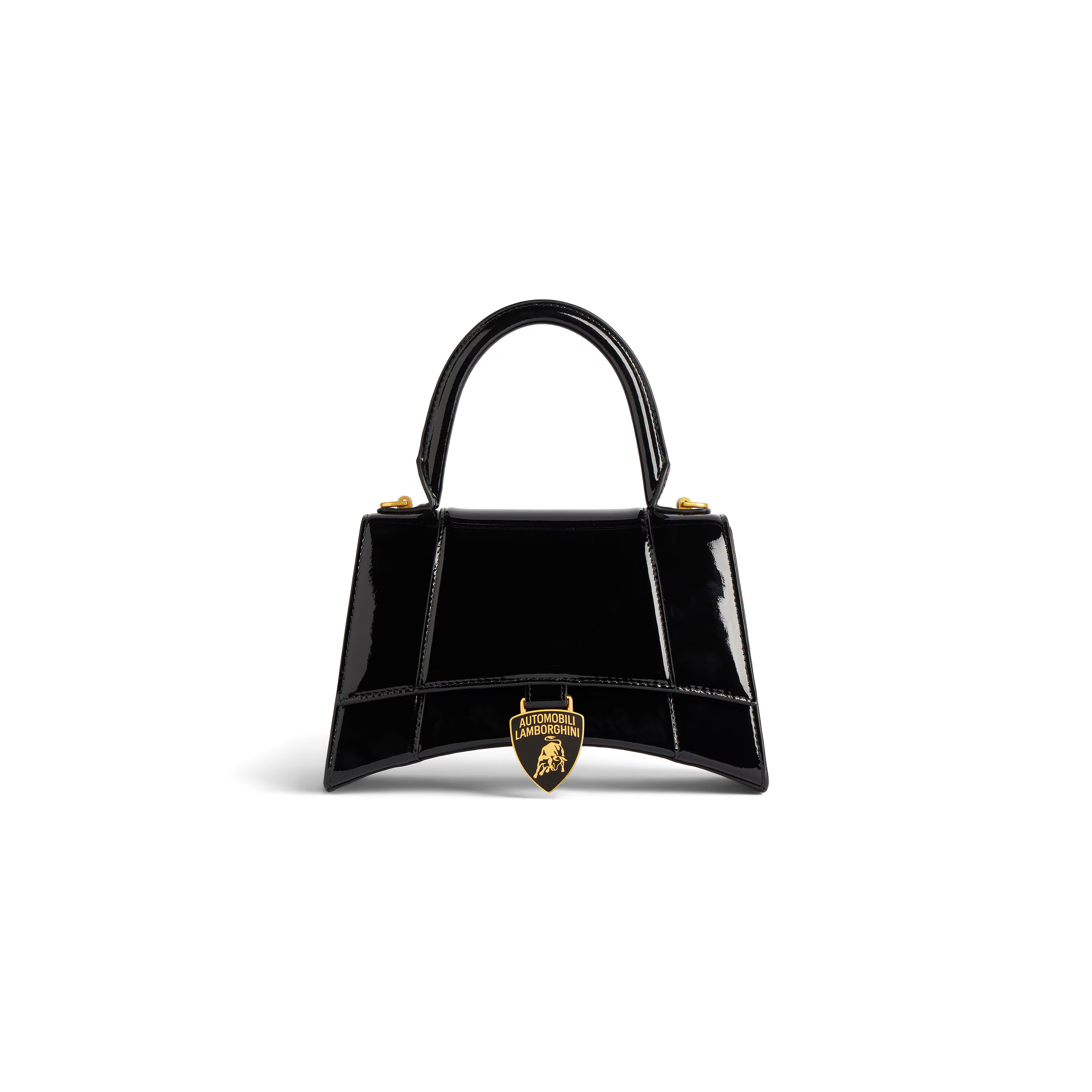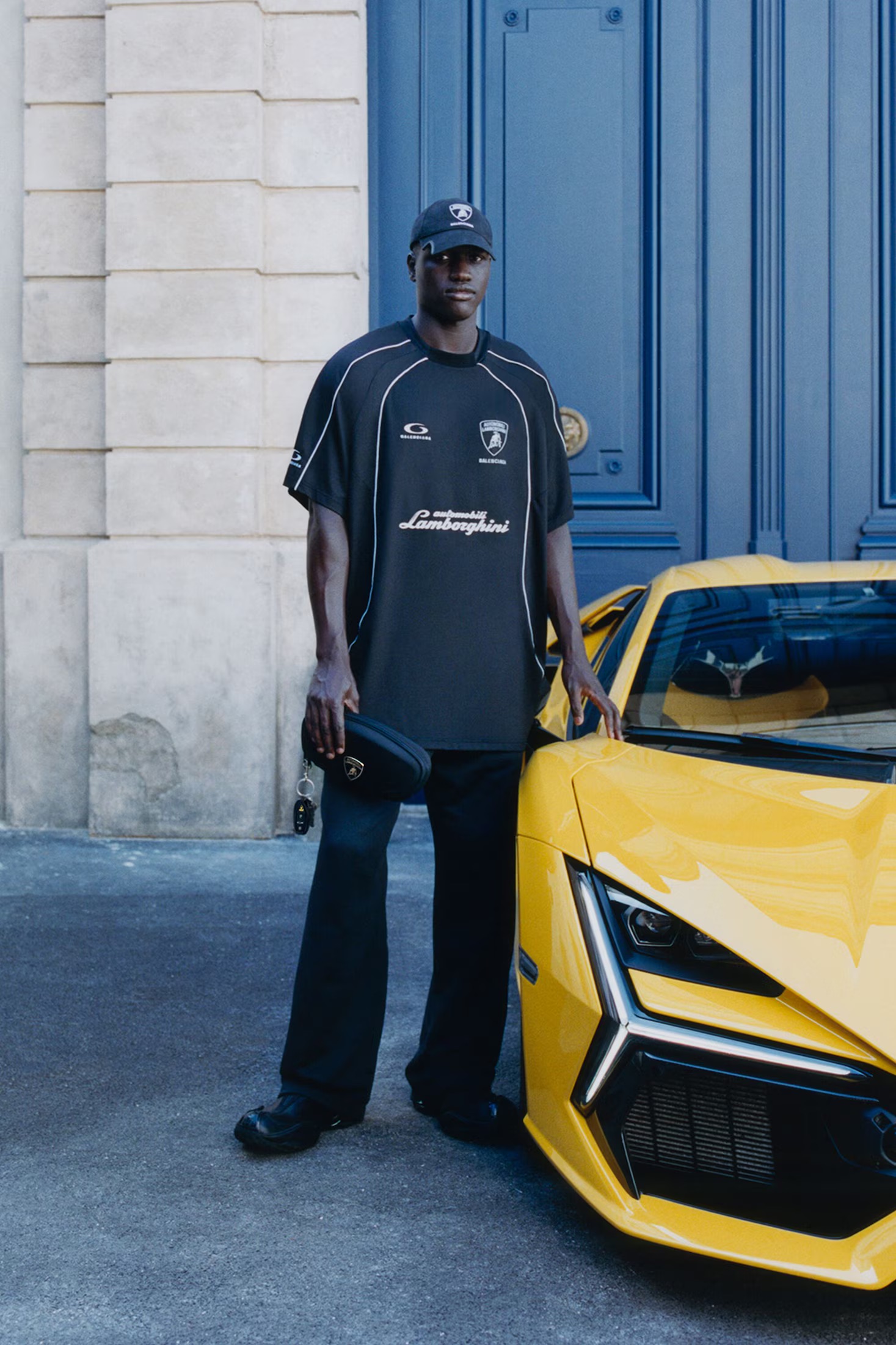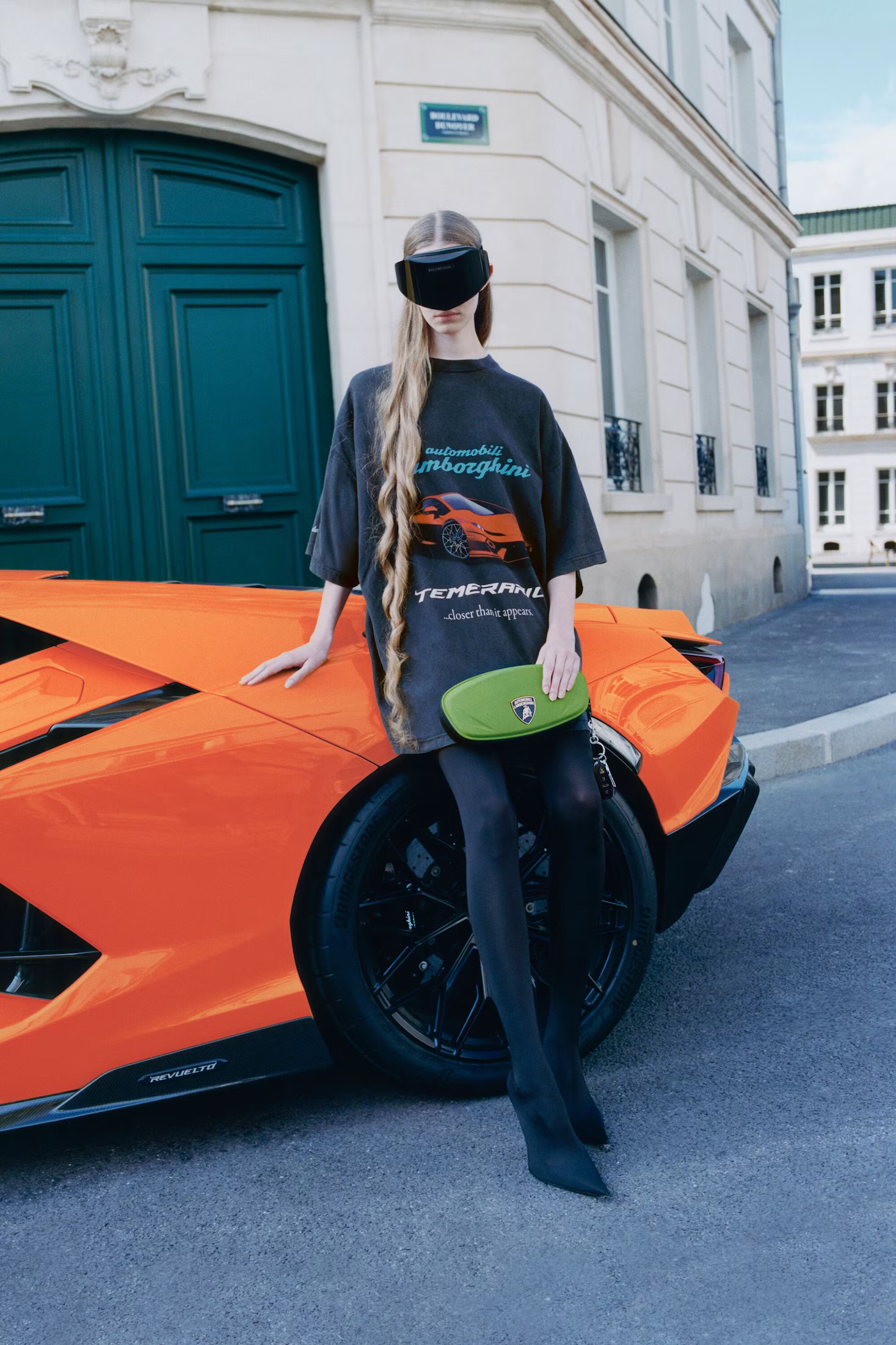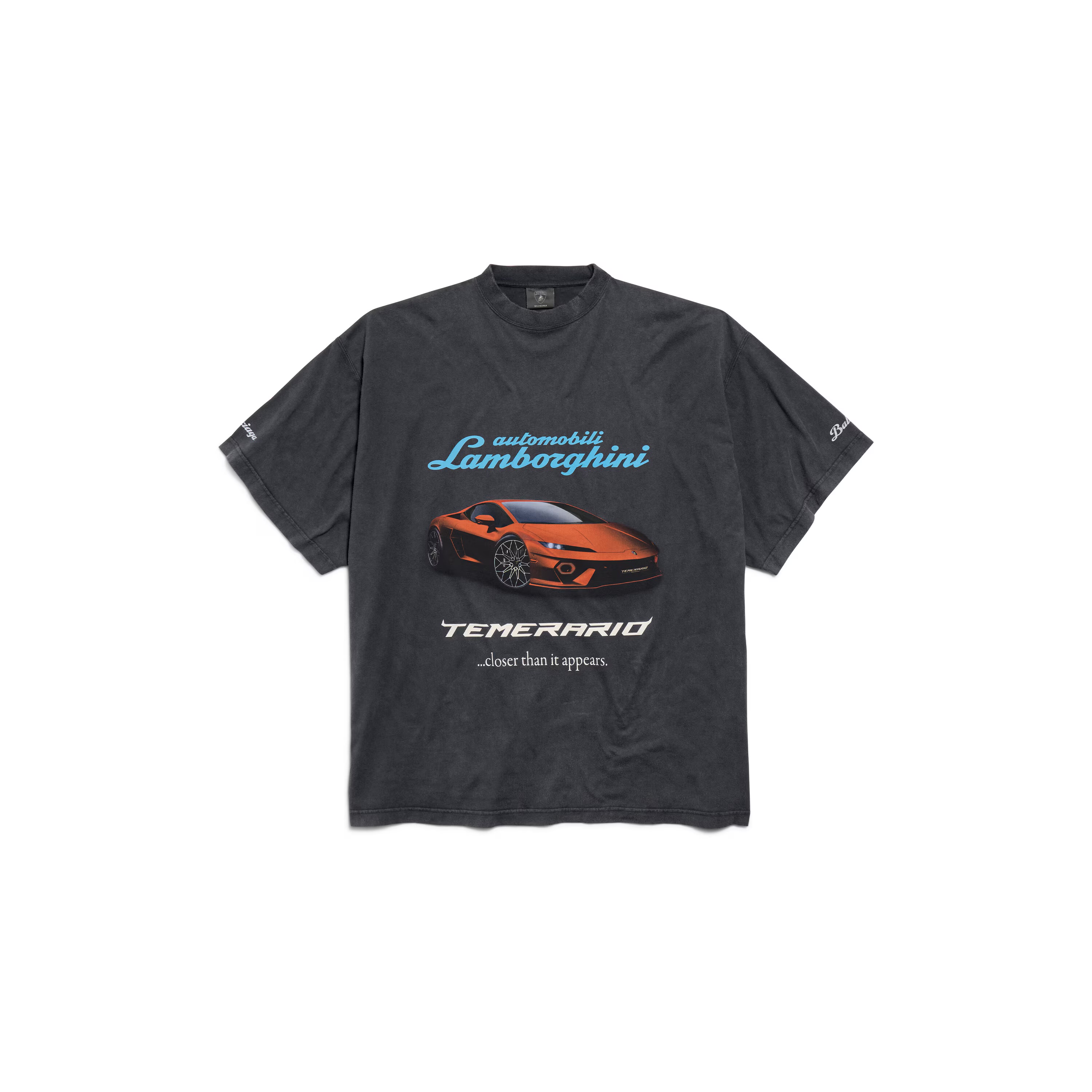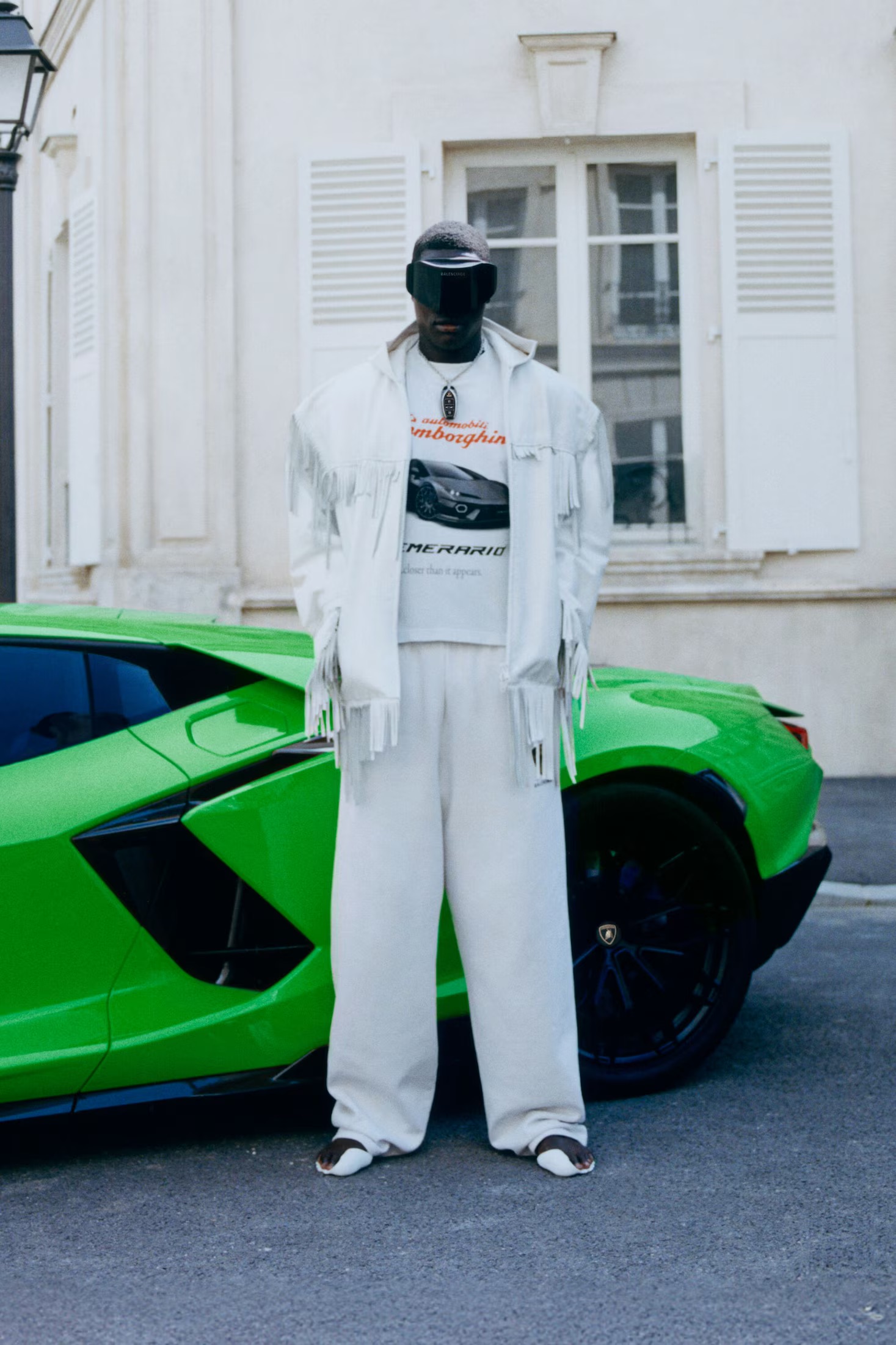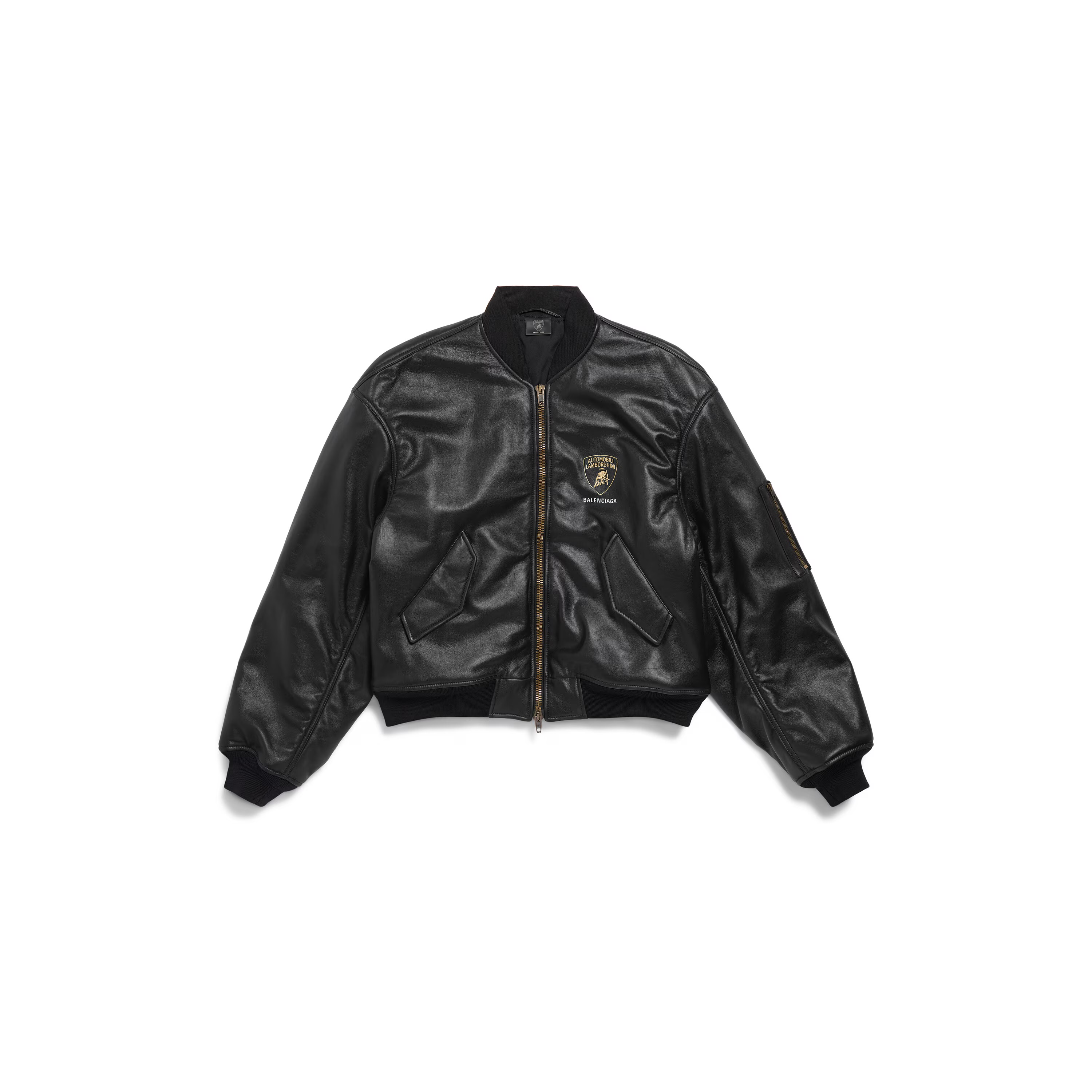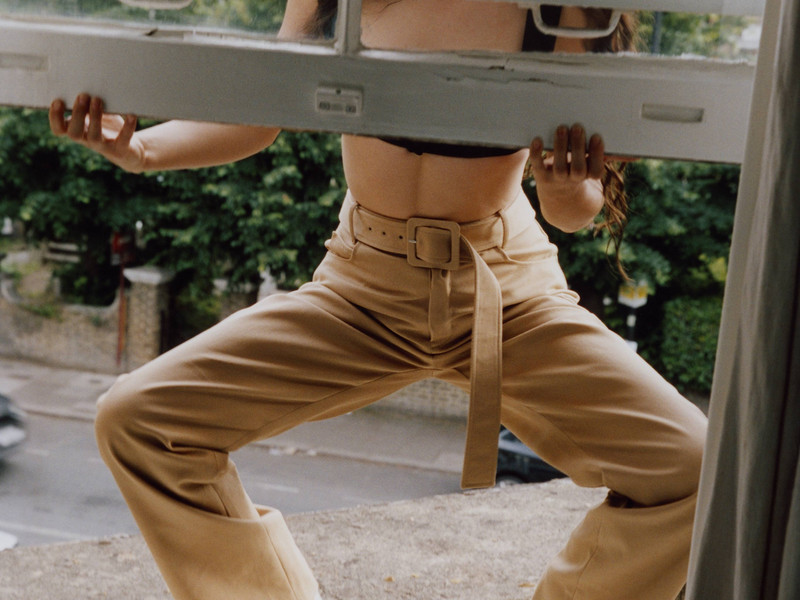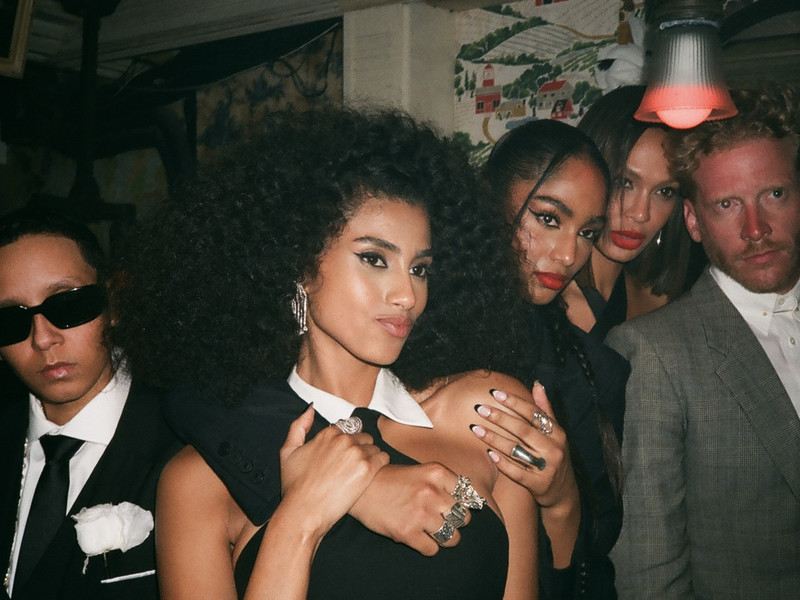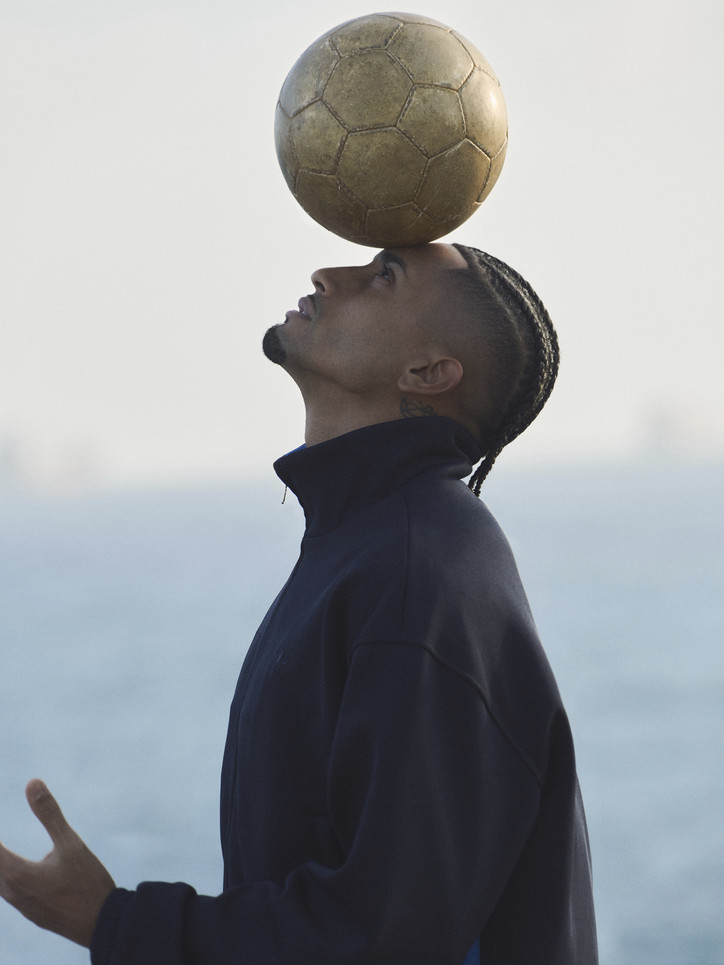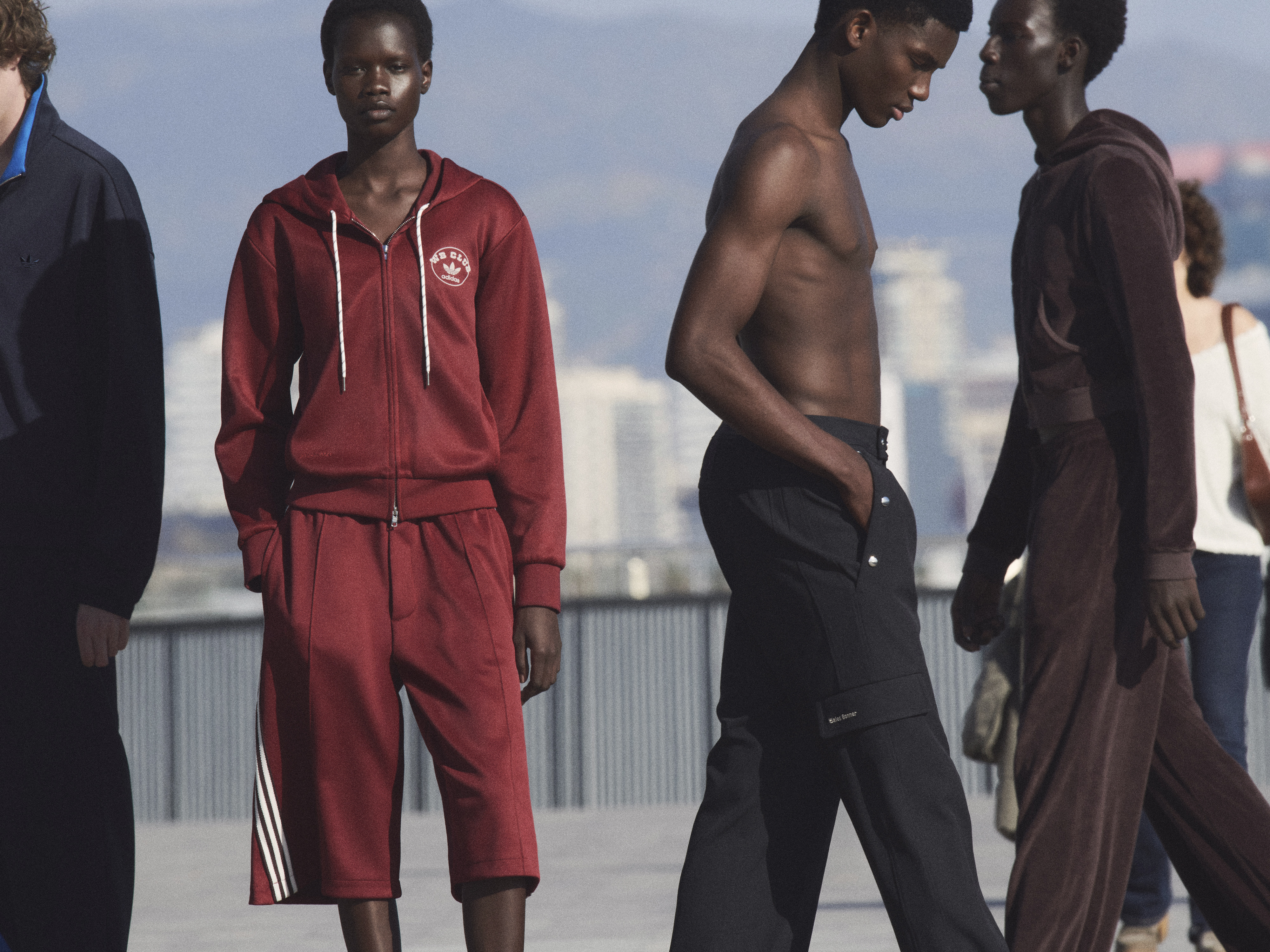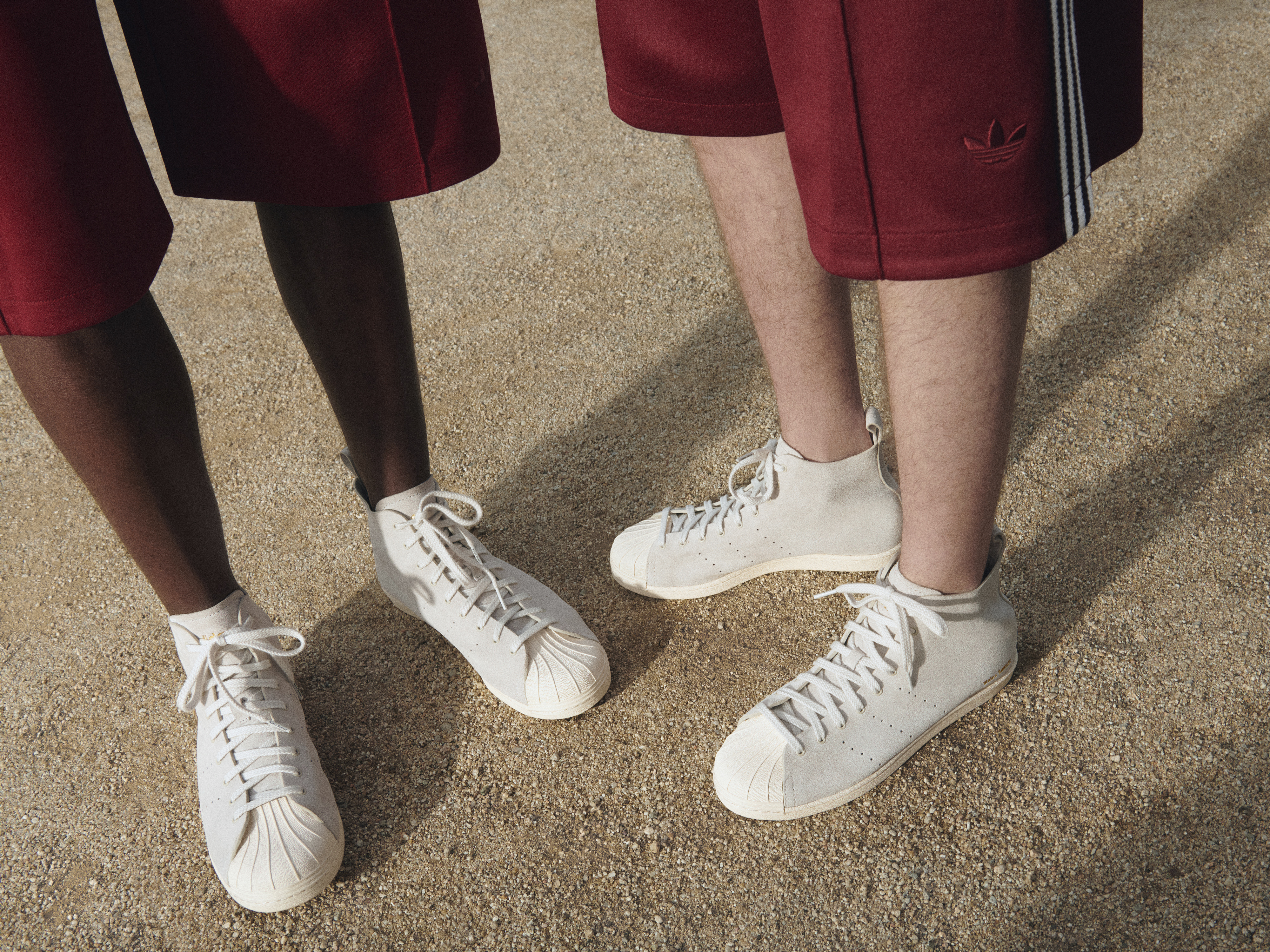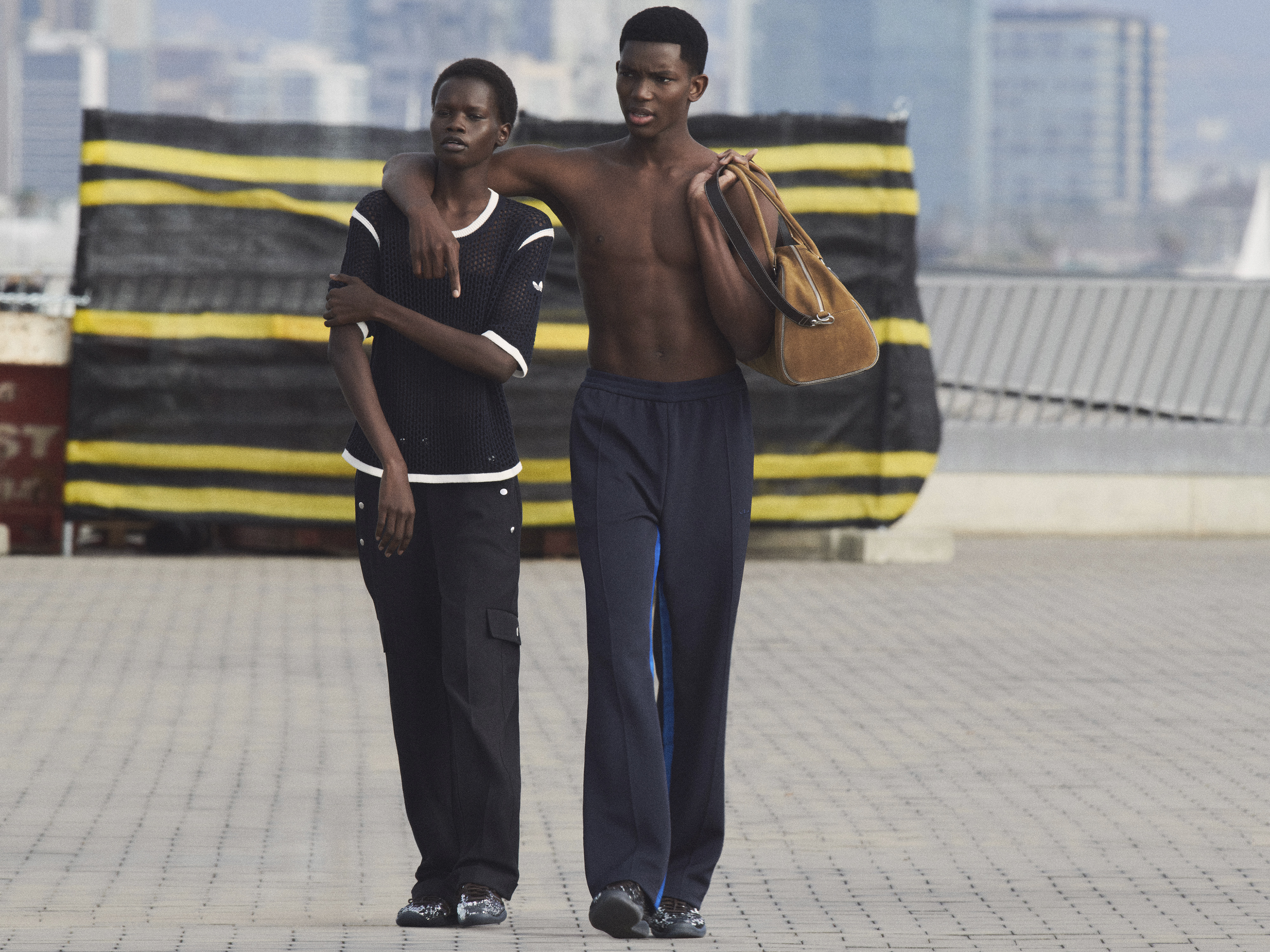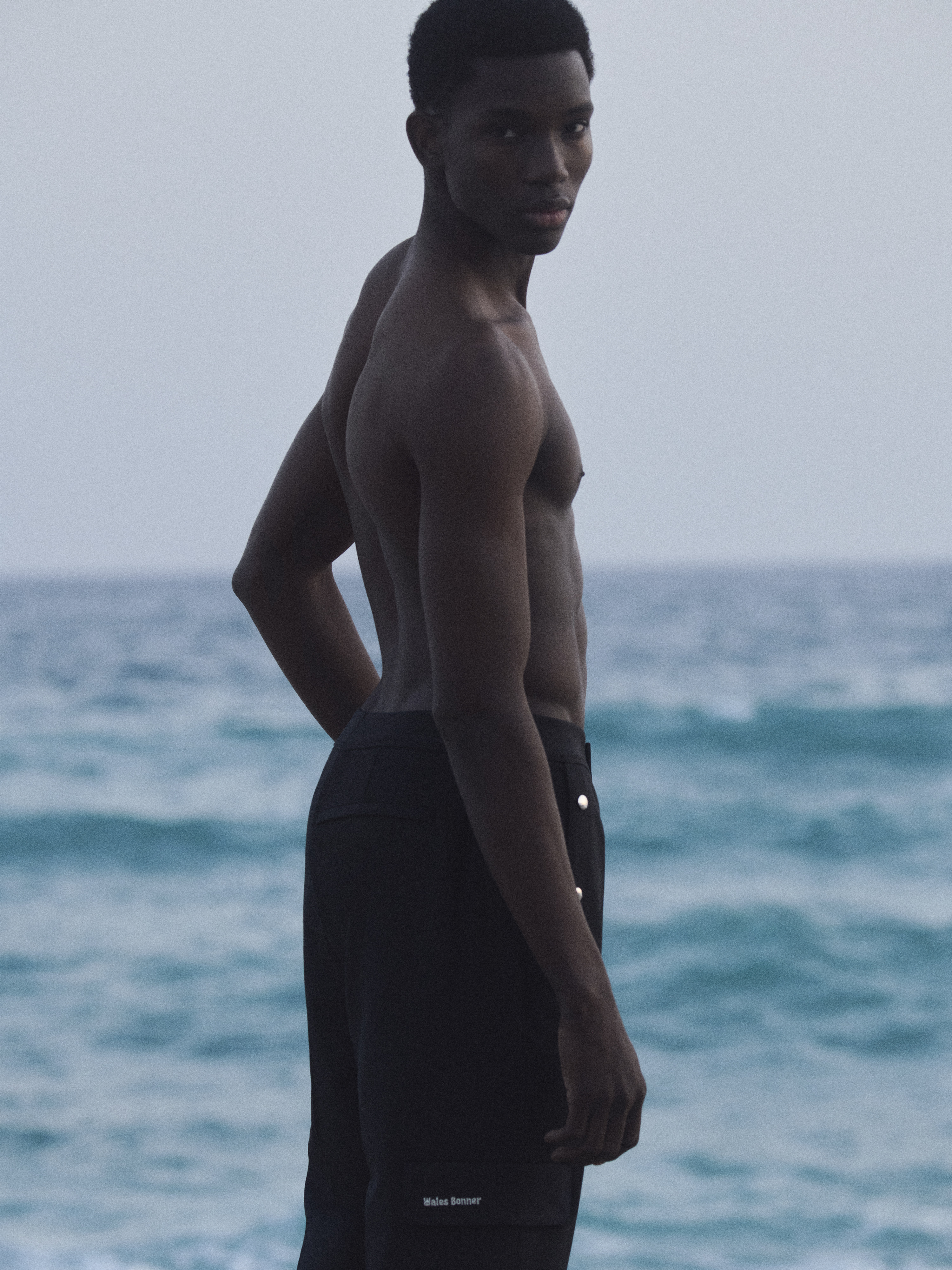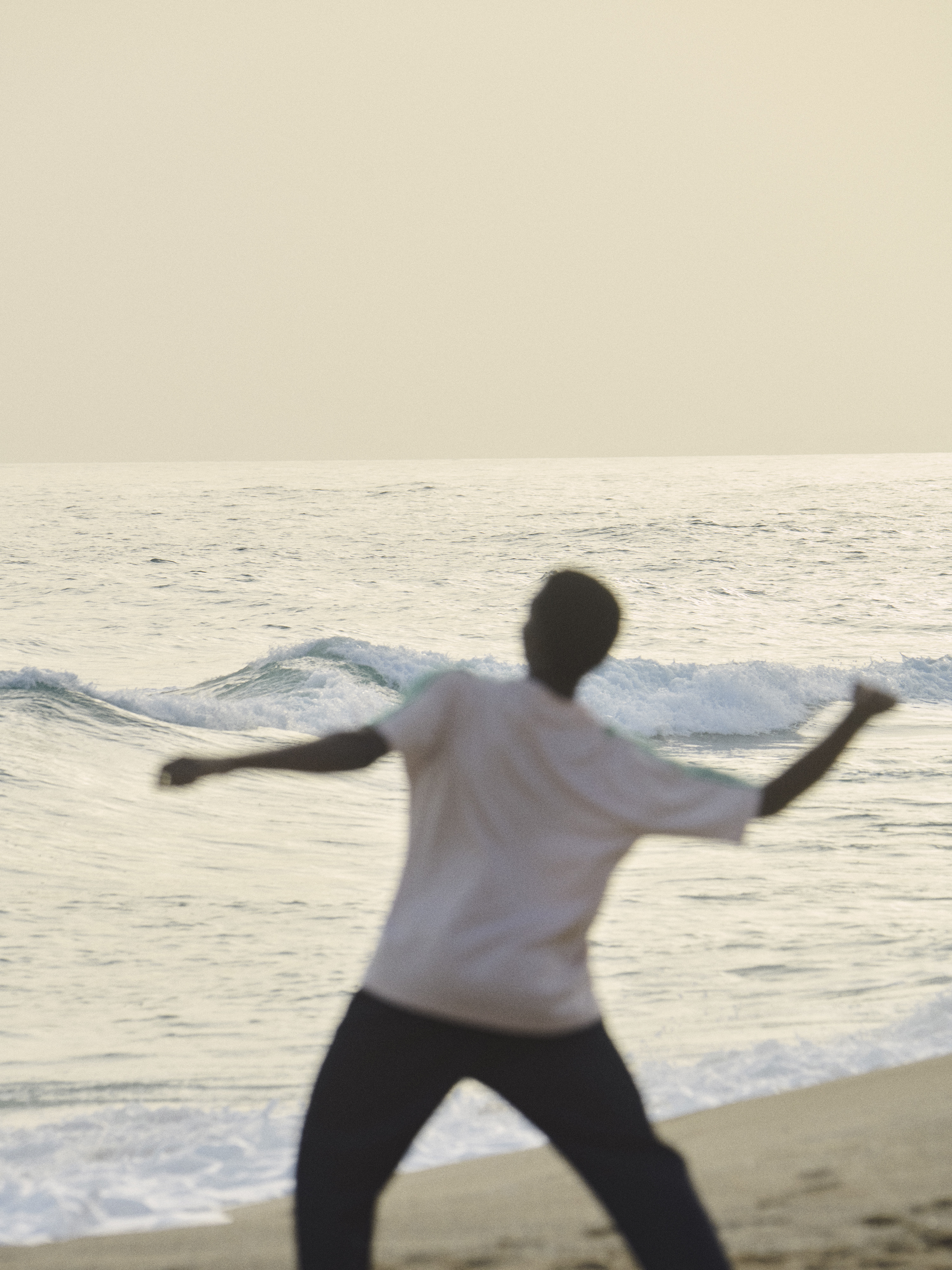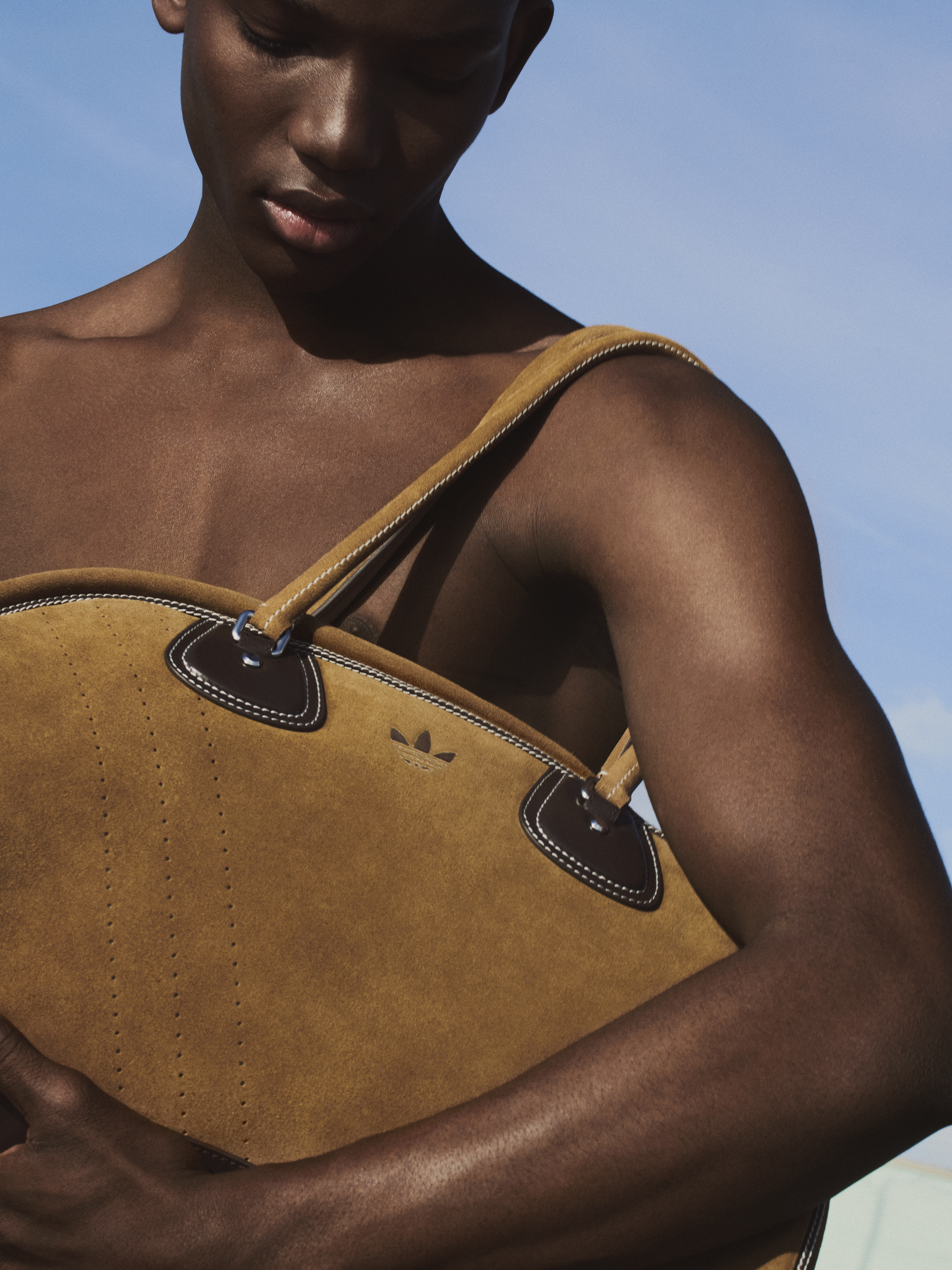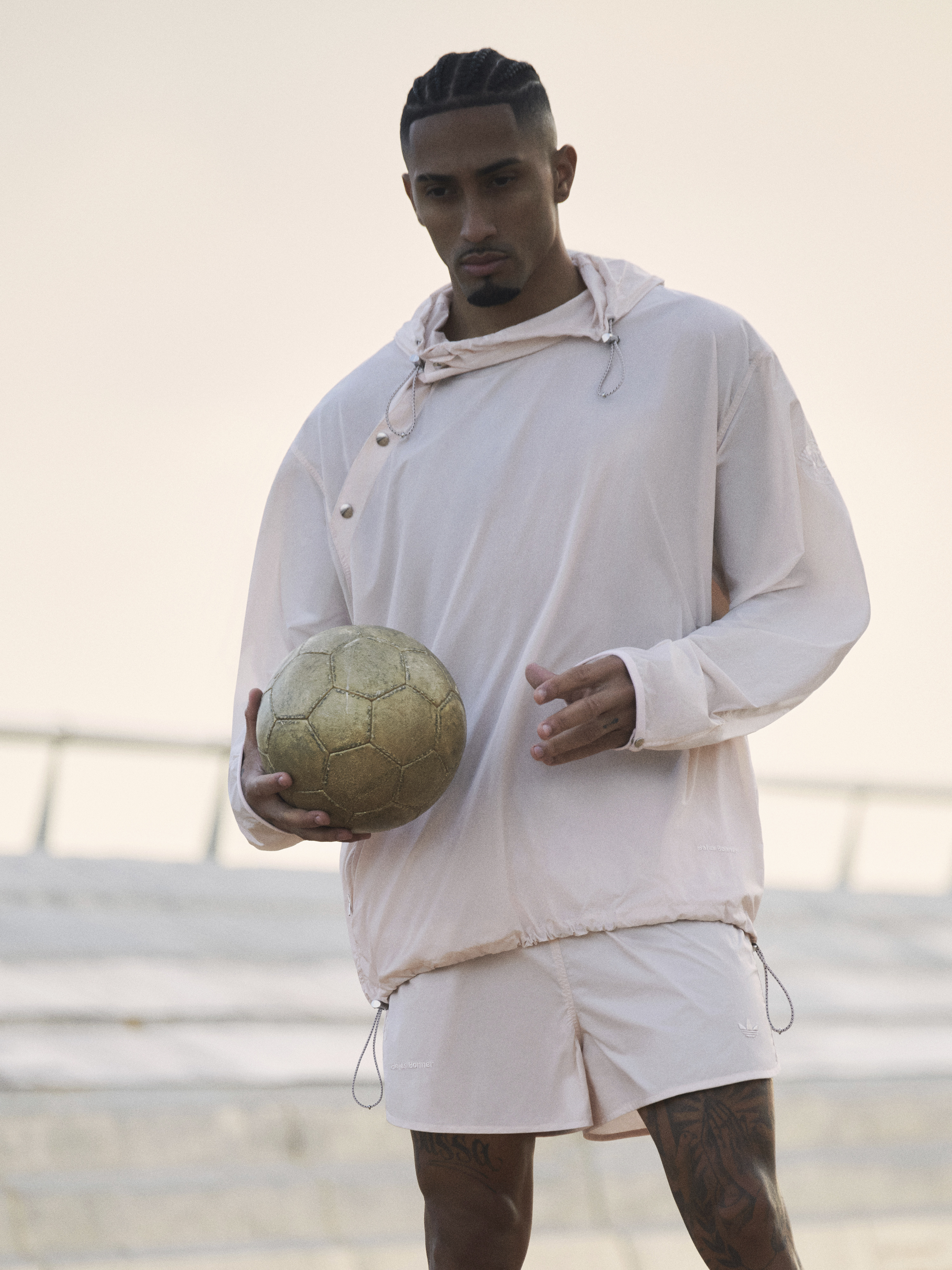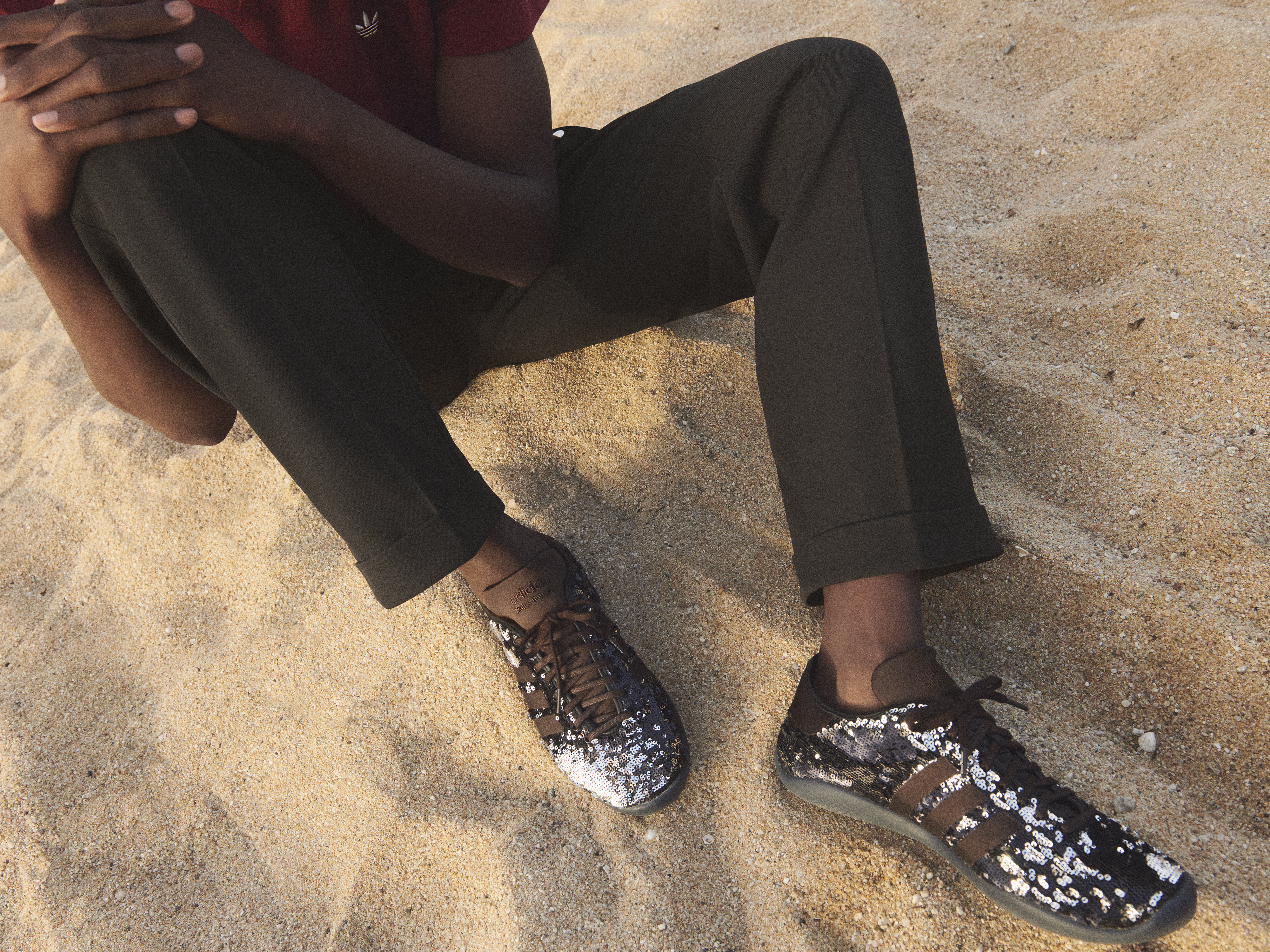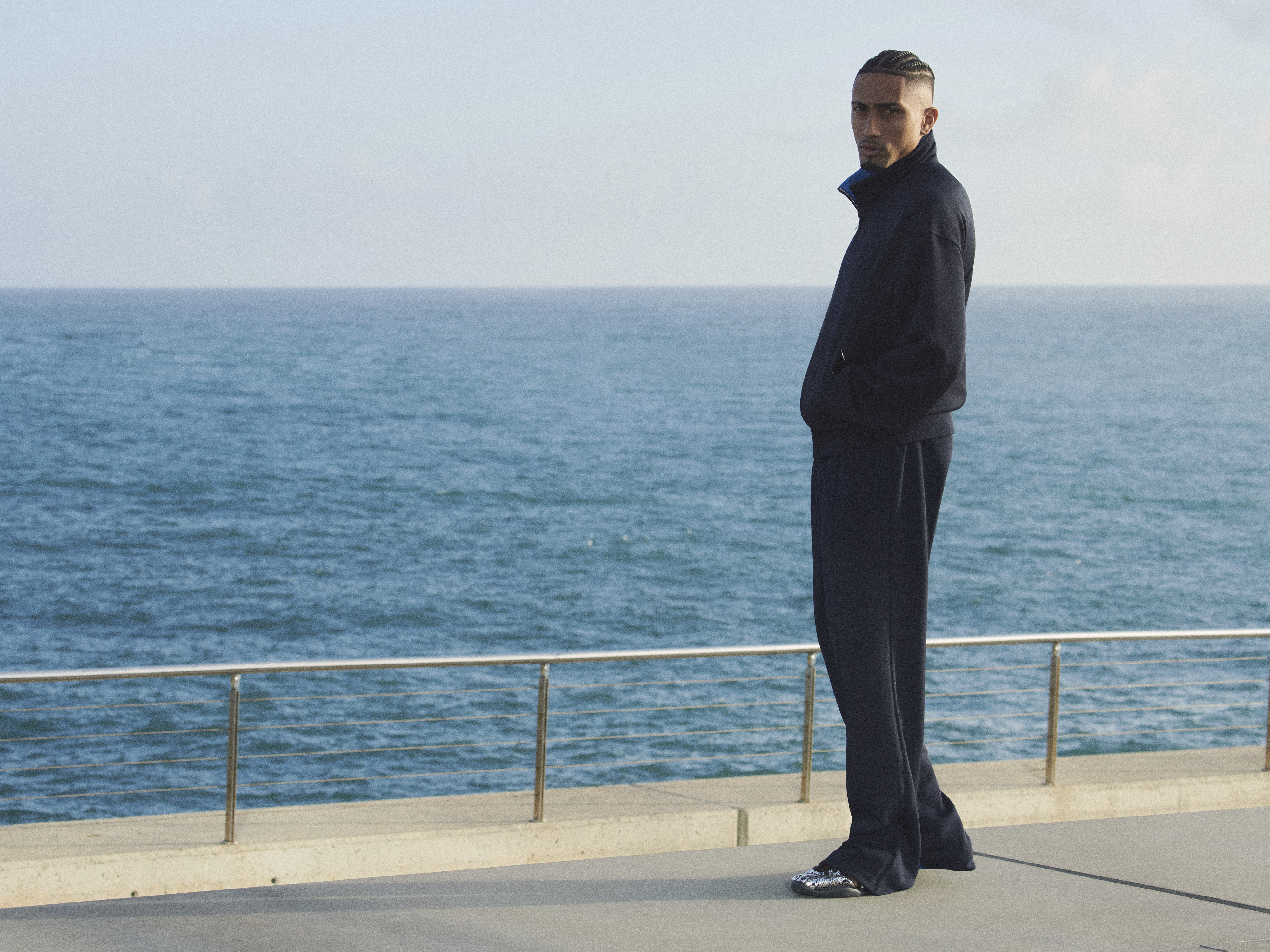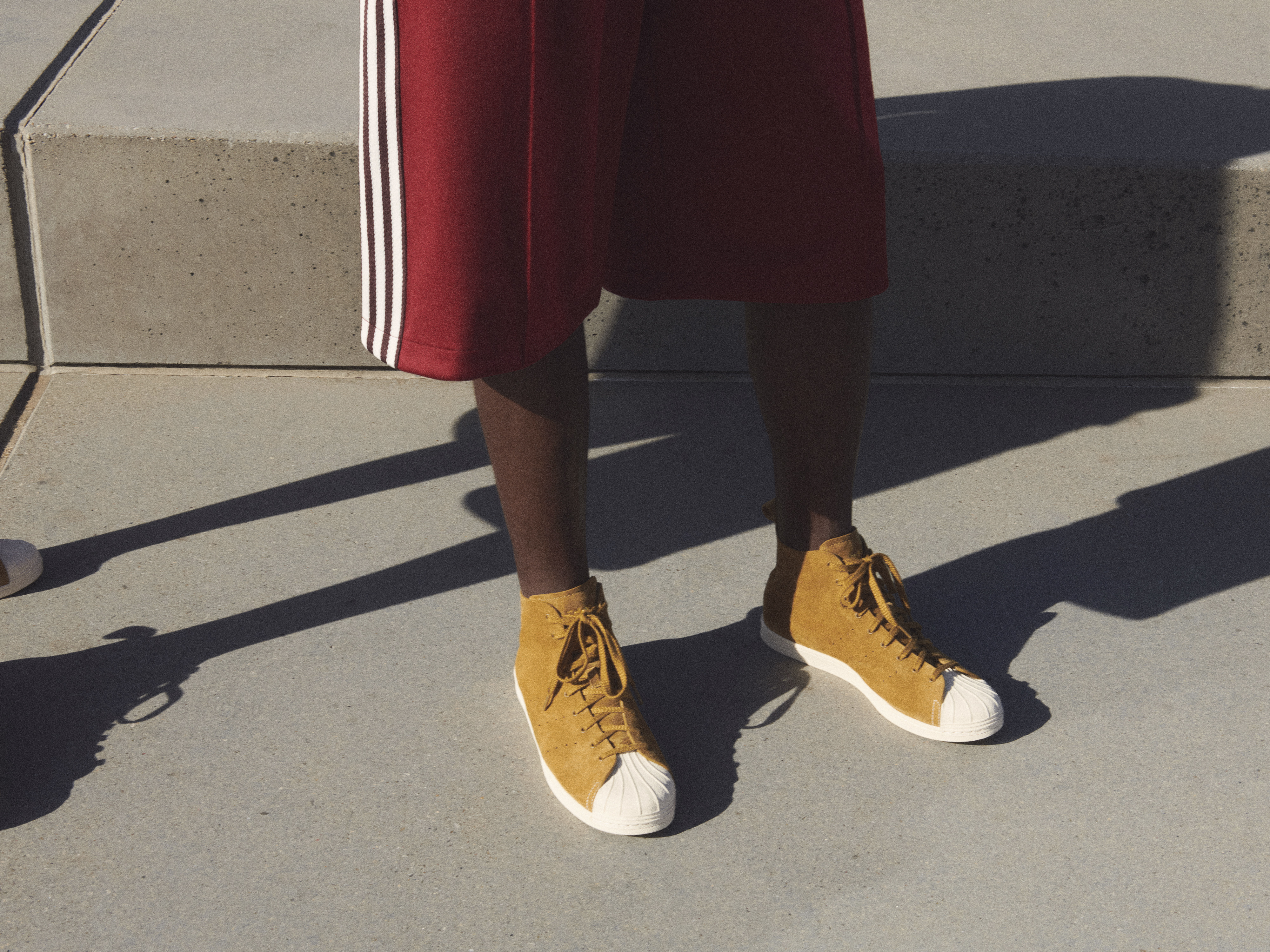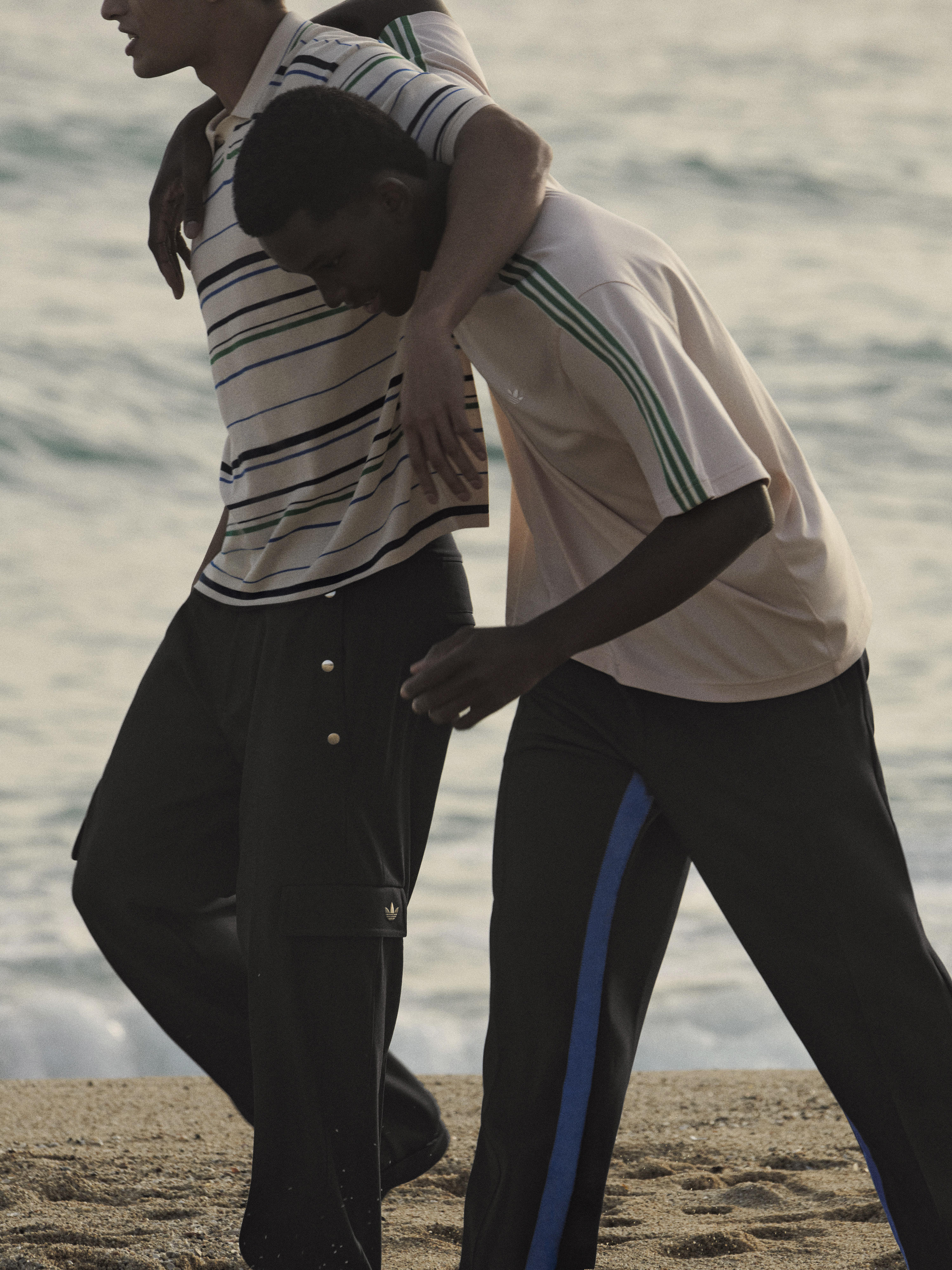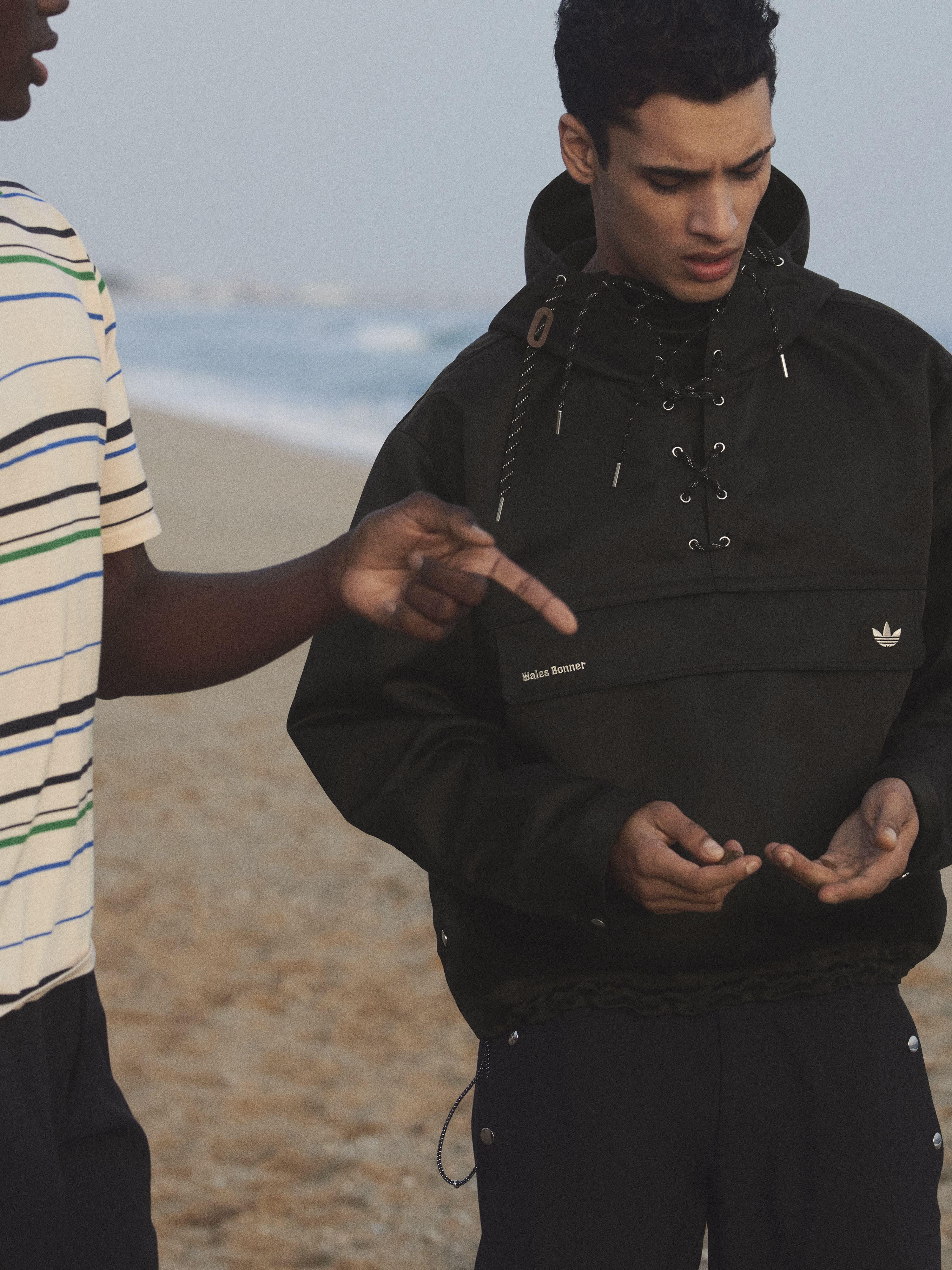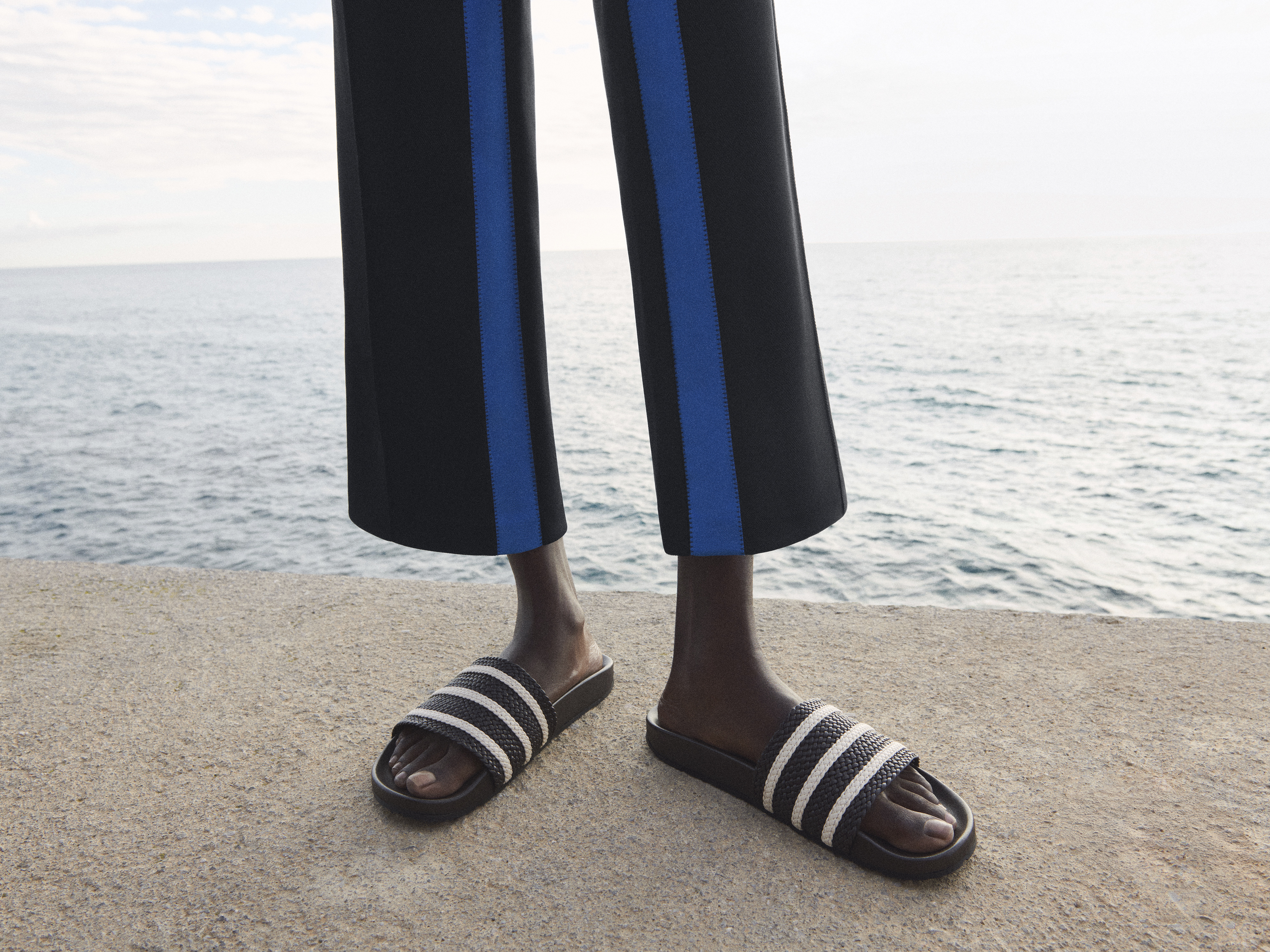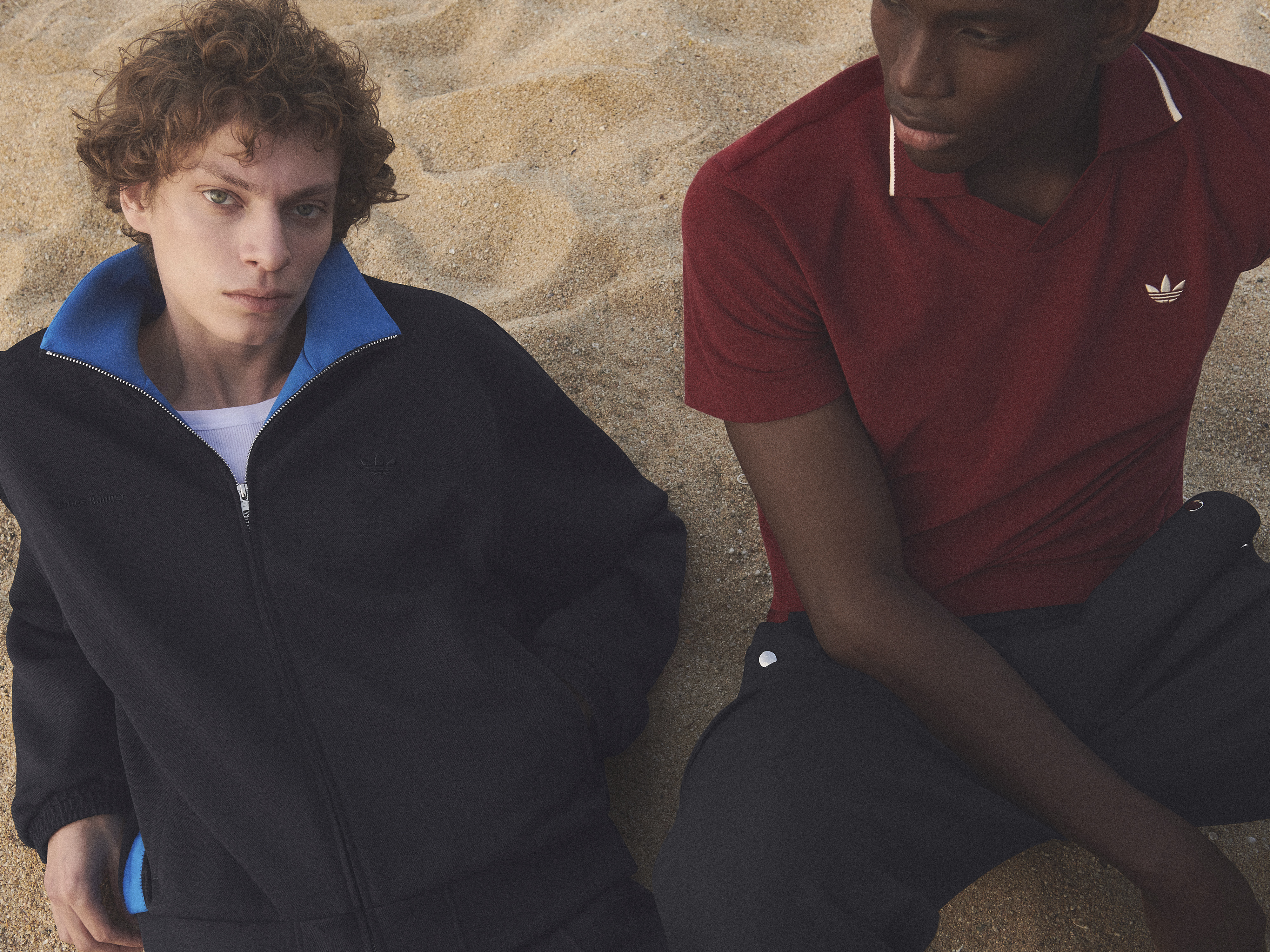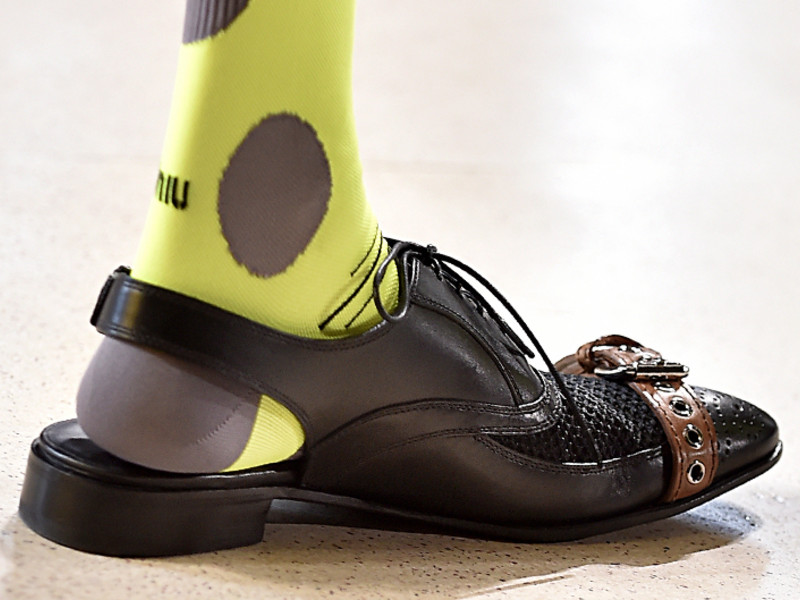The Design Language of Bobby Cabbagestalk
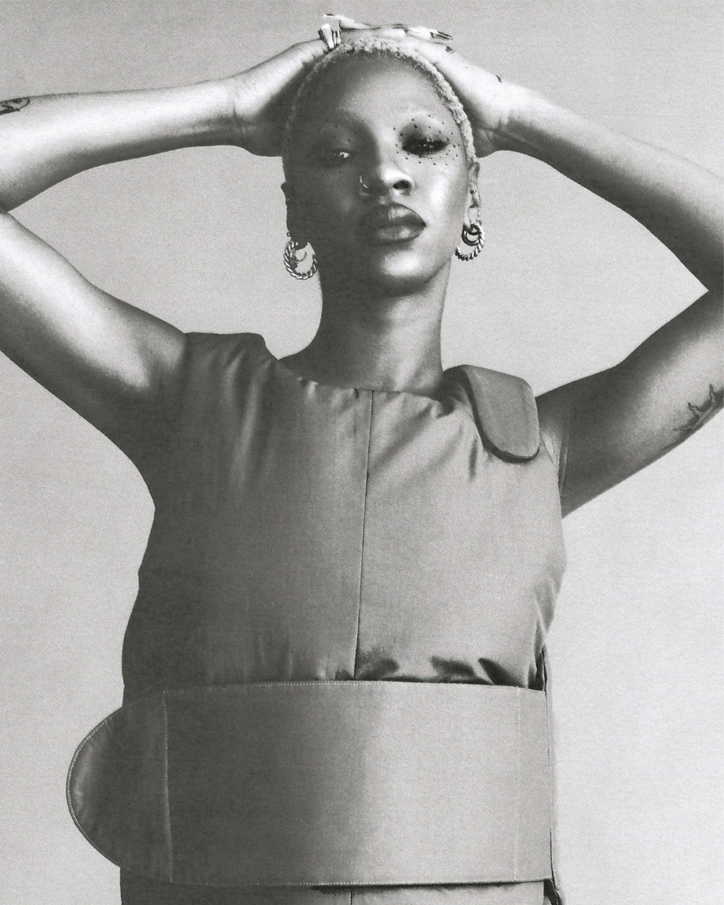
Cabbagestalk's journey has taken unexpected turns as a self-taught designer, arriving at the perfect moment — releasing his first collection with a solid support system behind him. Many people struggle with what to say or how to say it, yet Bobby Cabbagestalk speaks directly to the narrative his clothes tell, one of intention, community, and timelessness.
In an exclusive interview with office, Bobby Cabbagestalk discusses his first collection, "Soft Armor," his design journey, and the influences that have built him up.
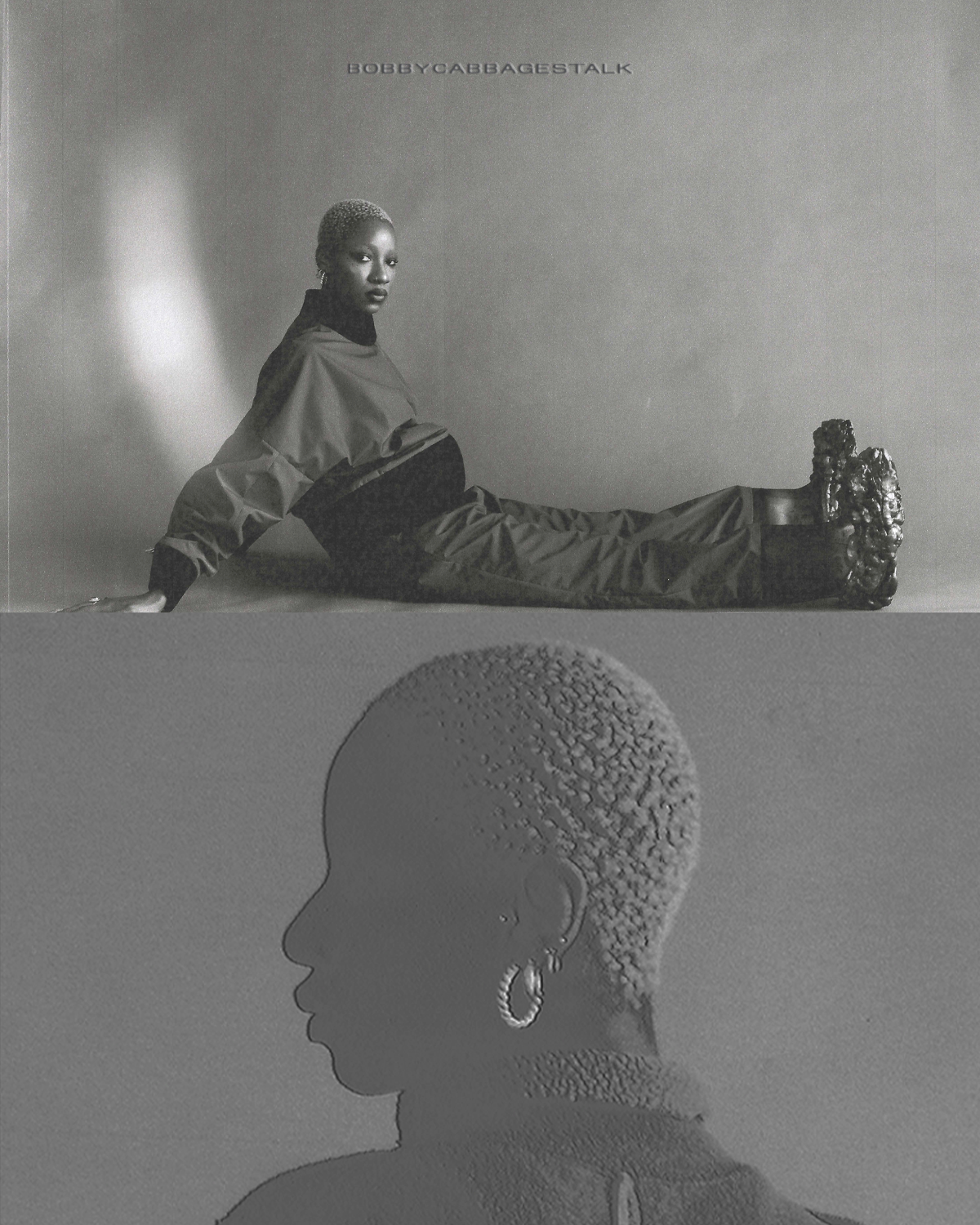
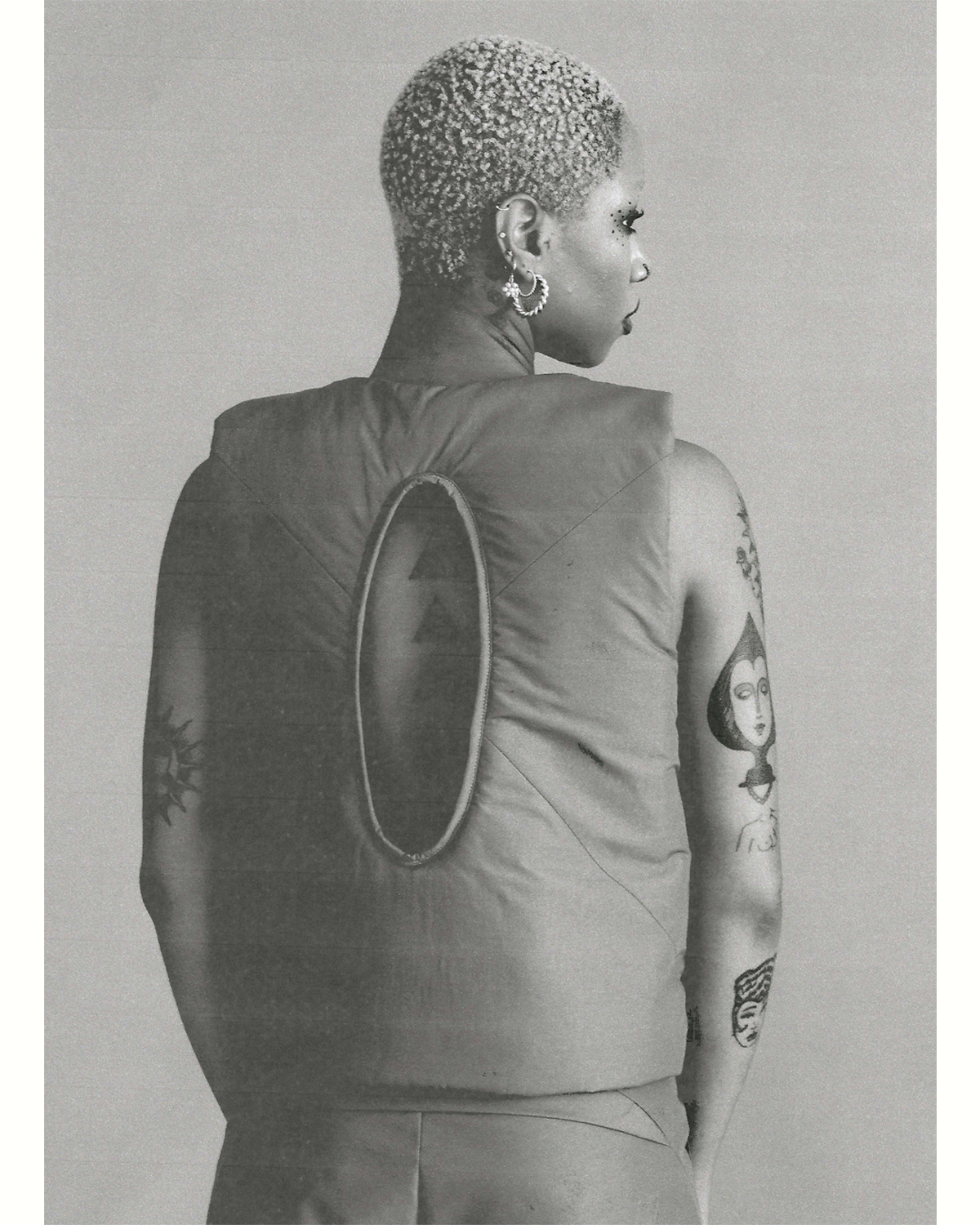
I want to talk about your beginnings. What jump-started this passion for design and clothing?
The funny thing is, I never thought that I could make clothing. I never thought that it was for me. But I've always been a fan of well-made products and the creative energy that surrounds things that I'm really into. And so, even outside of clothing, I can remember every time I encountered a creative asset, and it completely just changed my way of thinking. I think the first time for me was when I was in the car with my dad, and I might have been 12 years old, and it was a fall day after school. We're sitting in the driveway, and "Take Five" by Dave Brubeck came on the radio. That was the first time that I had the hairs on the back of my neck stand up. We were sitting in silence in his car, and the drum solo came on, Joe Morello, the drummer for Tech Five Quartet, and I was completely blown away. It was like time stopped.
I think being able to recreate that moment, by stopping people in their tracks and giving them that feeling of inspiration and empowerment really inspires me. So when I finally decided to make clothing, I had to make a decision, like, is this just ego? Or do I actually have a unique perspective? Do I have a story to tell? And I just wrote some ideas down. And I was like, 'I think I have something to say.' And that's kind of where the journey started. I went to school for advertising. I never studied fashion. So I was trying to get out of my own way. I don't need a degree. I don't need to know this person or that person. I can just try to figure it out. And I just made the decision; I'll start trying to make one piece and just go from there. And that's kind of how the wheels started turning.
What was the turning point from being inspired to creating your first piece, eventually leading to your first collection?
The first thing I made was this fishtail wax cotton jacket. This was a few years ago. And the first person that I sold it to was a friend of mine. He wore it out one day with a group of friends downtown in Little Tokyo, and my friend tapped me on the shoulder. He was like, 'Look’...I looked up and saw the way he walked and how his posture completely changed. His confidence was through the roof. You know, it was like he was king for a day. I was like, 'Okay, I think I'm onto something here.' So how can I snowball this into something bigger?
I absorb a lot of information on a daily basis. I watch a lot of film. I read a lot of poetry. I listen to tons and tons of music. So I'm always looking for new information that I can interpret and express back out into the world. I started to realize these ideas were worth something, and I could break them out and spread them across, you know, different categories that will essentially build a universe, my design universe. So everything that I'm working on right now is an attempt to develop a design language with a story that people can really sink their teeth into. I decided to focus my attention on silhouettes and how my clothes function. The fashion landscape is so competitive and I don't want just to make a jean or a t-shirt, you know. So I made rules for the first collection that I'm working on now, I told myself “no buttons, no zippers”; the fabric has to do the work for you. And from there, I was able to apply this ethos to a shirt, to pants, to a jacket, etc. When I started to sketch out these ideas and started prototype them, I realized that I had something that I could build on.
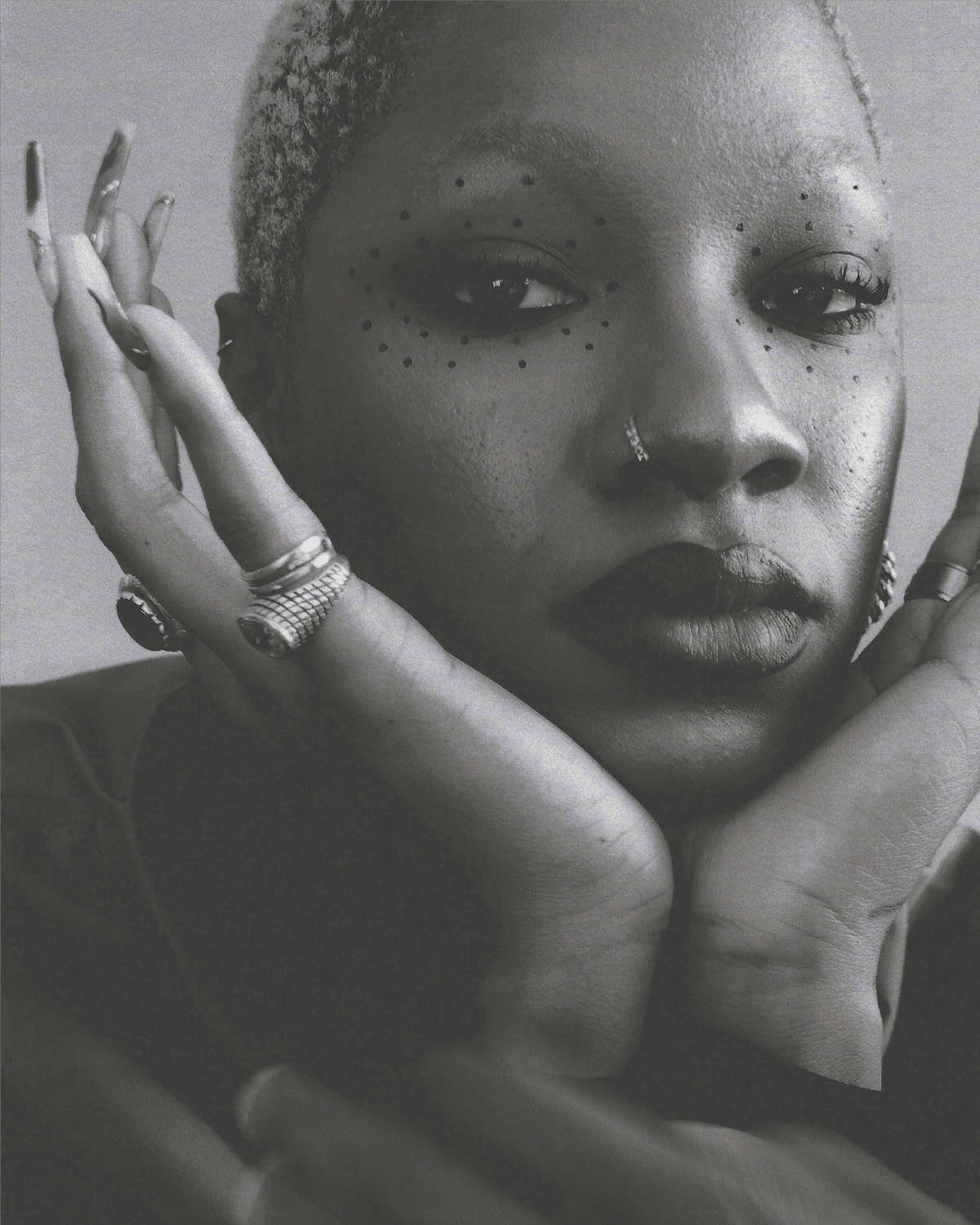
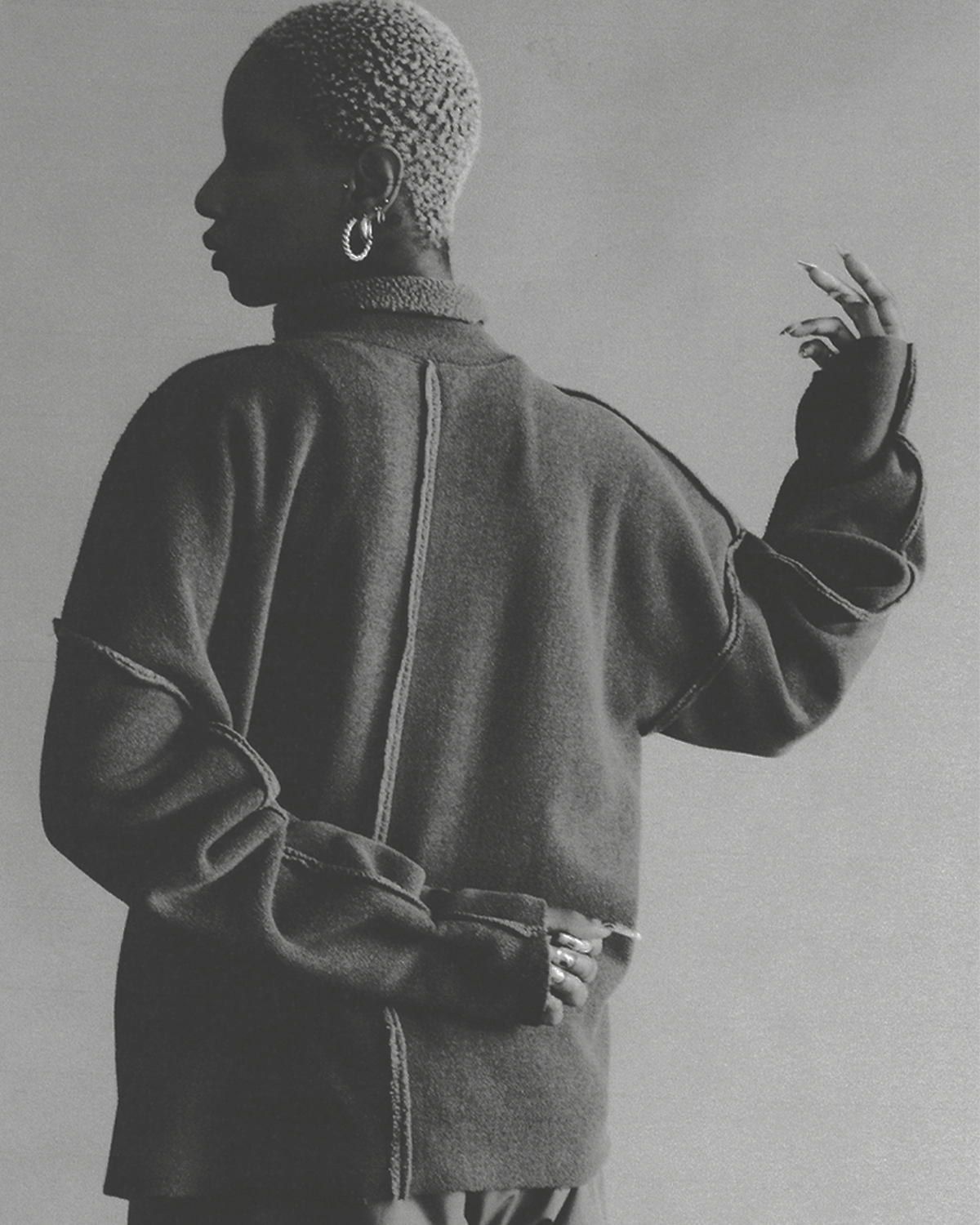
Your work continues to make an impression. It's been seen on Flo Milli, Nez, and others. Can you speak to those connections?
A good friend of mine, Nez, he's an artist, a huge producer who has transitioned to a solo artist. We went to college together, so we have a great creative rapport. We were able to creative direct a video that he had with Flo Milli. And I was lucky enough to work at YEEZY starting in January 2020 for the Season 8 collection that was shown in Paris. YEEZY was essentially my fashion school. I can't get into too much detail about what I did there, but it completely reframed how I thought about design, and larger than that, how I think about culture, zeitgeist, and artistic expression. It was the most important experience I’ve had to date. It just taught me how to have certain design sensibilities that I never considered before. So once I was able to experience that it was truly transformational for me as a creative.
As you said, your craft is informed by the extensive amount of information you consume. What inspired your first collection?
Totally. There's a cult classic sci-fi movie called THX 1138 by George Lucas, his directorial debut which came out in 1971. I'm heavy into science fiction because of the exaggerated possibilities that the genre presents, and that's where a lot of my inspiration comes from. This film has a narrated version in which George Lucas and Steven Spielberg walk you through each scene and what they were trying to achieve cinematically. At one point they said that they didn't want to make the movie look like the future. They wanted to make the movie as if it was made in the future. And that completely shifted my way of thinking. I use that statement as my Northstar, of how I want to design because it's very easy, especially now, to try to shock people into wearing your clothes, making things that are bizarre, but not fantastic. I can't compete with that. That's just not how I work. Rather, I often ask how I can be timeless? This is the white rabbit that I'm chasing, how can I make things as if they were made in the future, but even when we get to that moment, it's still ahead and ahead and ahead without being too far out of the conversation when people can't buy into it. That's the ethos that I continue to run with, timelessness. Progressive, but not to create a barrier. I just want to transform people's perspective of themselves when they wear my clothes and allow everyone to feel protected, empowered, and feel like they just look really fucking cool. You know? And have that confidence. How can I make people feel like they’re the best version of themselves.
While your clothes occupy the digital, do you anticipate a physical space in the future where customers can feel your pieces and have immediate connections with them? I understand you began selling your up-cycled tote at Género Neutral, an Echo Park showroom.
Oh, 100%. My friends have been pushing me to consider having a physical presence for quite a while. And it's obviously something that I want to do. I just wanted to make sure that I had the foundation to provide a unique experience. So the bag that I made in Género Neutral is upcycled. I sourced old mail bags from the 50s to the 80s. And I got these Army-issued World War II straps. And I was just like, 'Okay, I have this material and I want to make a bag that'll last forever.' How can I create something that kind of stands out architecturally, and create a unique shape that people when they wear it, it's like,' What the hell is that.' So it was just a combination of me trying to make something functional but also giving it a little bit of aesthetic consideration, making it a beautiful thing that you're just carrying around. And I also, at least I'm trying to combine these analog thoughts with the digital world. So you have this super old product that was made to last for a very long time. But it's been shaped into this modern shape with the ovals and the windows and the straps. In a perfect world, years from now, if I've cracked the code that I'm trying to seek, everything that I do is a perfect marriage of, the pre-internet kid who understands real-world interaction, and in-person moments, versus that first time going on the internet and being like,' holy shit, there's a whole other world out here to discover. 'But yeah, I'm looking to have pop-ups in the future and physical presence. When people touch my clothing and are able to try it on or just see it in person, it leaves a more lasting impression. So that's definitely what I'm working towards right now.
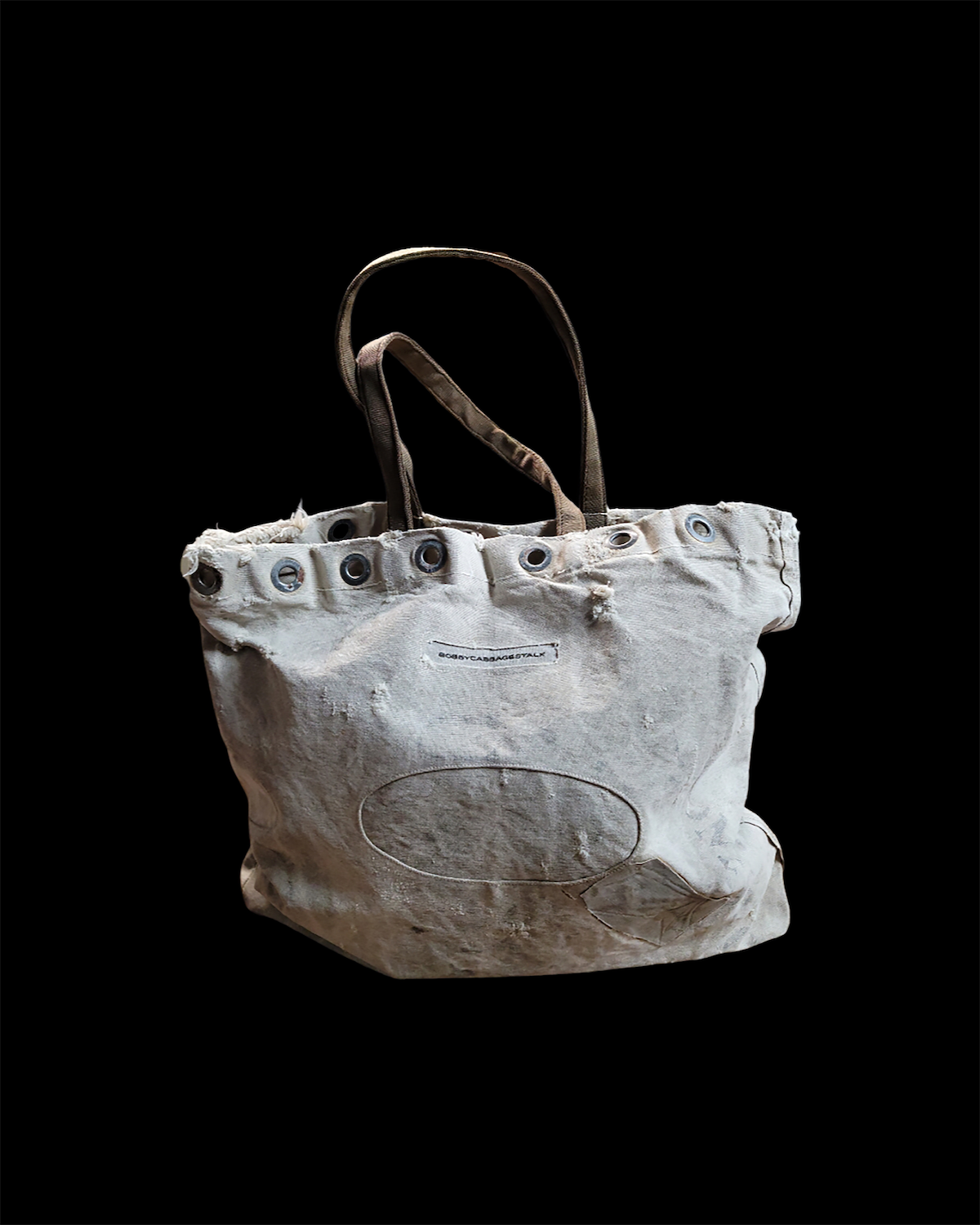
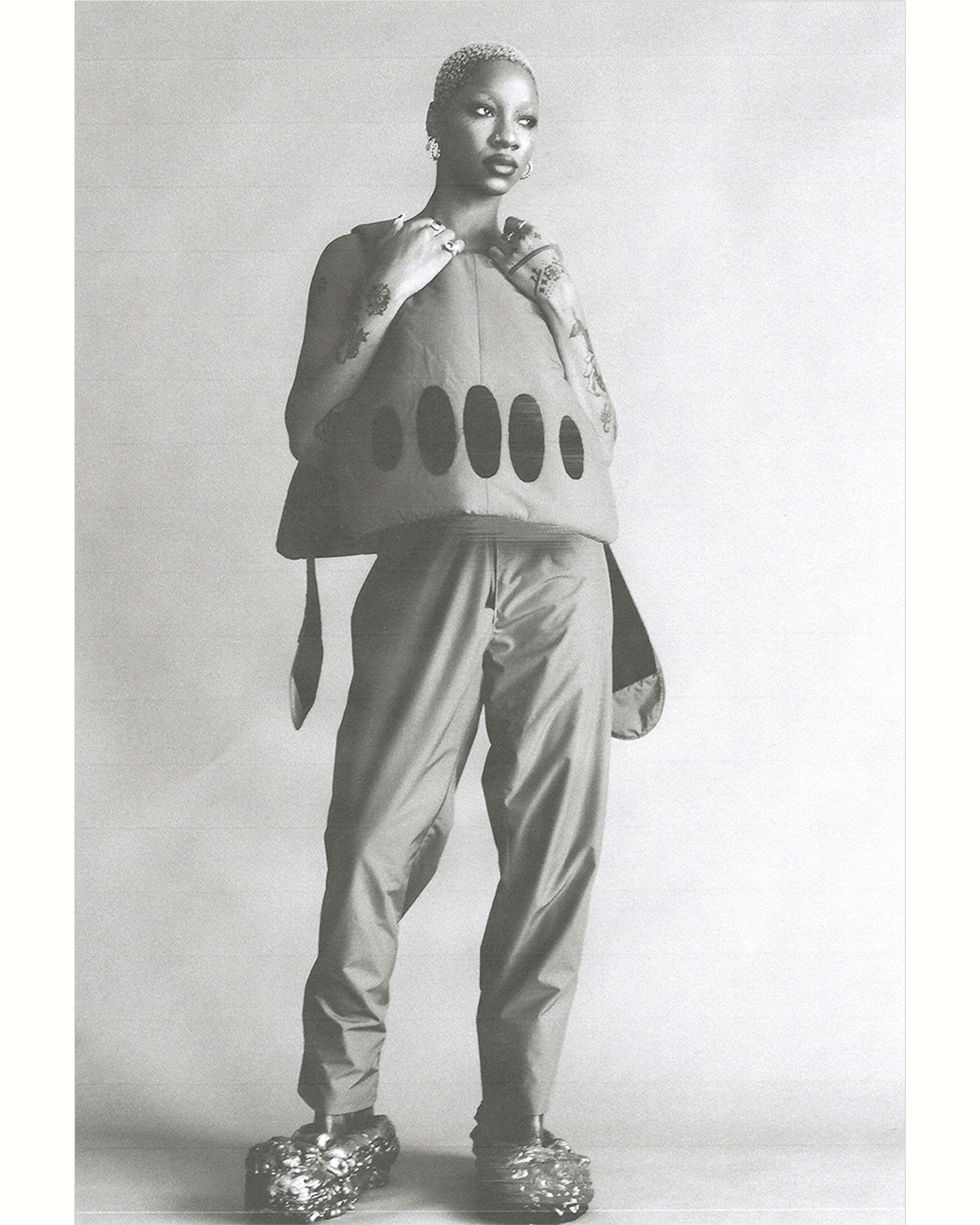
You also make accessible and relatively affordable clothes compared to brands that co-opt up-cycle wear or elevated sourced wear and charge nearly $1,000 for one piece. What's the intention behind that and your relationship with clothes that range in price?
I have a funny story. So I'm from Buffalo, New York. I grew up on Ralph Lauren, Nautica, Tommy Hilfiger, and LL Bean. The first piece of designer clothing I wanted were these blue wash Tommy Hilfiger jeans with the Tommy embroidered patch on the belt loop on the back. I might have been 12 years old. They were 90 bucks, and my mom was like, 'We'll put them on layaway.' So it took a month to pay it off. I finally got these jeans and wore them to church the next day with a red plaid Levi's button-down, tucked into the jeans, and some Nikes. I was in church for the entire day walking around making sure everybody saw my jeans. I was so happy to be able to take part in that conversation. But that's why Ralph Lauren is everywhere; Ralph Lauren doesn't price you out of the conversation and the quality of their clothes doesn’t change. I was talking to my friend NEZ. We kind of were around for the first streetwear boom, pre-Hypebeast when we were in college. And out of all those brands, we were buying, all those T-shirts and all that shit, we look in our closet now. It's mainly either Carhartt, Ralph Lauren, vintage, or my samples. These clothes last forever, and they outlive their price point, you know what I mean? It's added value. And so that's also something that I'm working on. There's a great Black painter, Kerry James Marshall, and he said, "what it means to be a contemporary artist is that you not only have to create value, you have to educate and add value to everything that you do." And so if I can make a product that people can afford, but when they get it, they feel like they're lucky even to have it because it'll outlast how much it costs. I think that's a way of adding value to people's lives. And getting them to understand the quality, thought, and consideration that goes into designing these clothes. Because I do want to have this dialogue with my customer about the way that I think and view the world and how things function. I just don't want to create a product that's so astronomically expensive that they like it, it looks cool on the internet, but they can't see themselves in it in real life.
Your outlook is extremely expansive and allows you to explore the intersections of different modes of design and art. Aside from fashion, where do you see these explorations taking you?
The thing that I love about fashion is that you can have 10 different conversations to express one idea. Photography, typography, graphic design, set design, music, etc. I think that's why I gravitate towards fashion so much because the garment is just the first step. Virgil, rest in peace; he said, "I can either design this cup, or I can design the room that cup is in." And for me, I want to design that room as well. I do want to use this as a platform to be able to extend into other forms of expression. I have a lot of ideas about furniture design and home goods, especially because a lot of the brands that I love and grew up with, they're not only in your closet, they're in your living room, they're in your bathroom, and everything is apart of this ecosystem. I love film and during shutdown, I was watching every movie that I told myself I was going to watch over the past few years. So I'm watching all these Japanese filmmakers, and I'm watching these Russian and German filmmakers and just seeing their perspectives, and I want to be able to do this too. I think it would be only natural that I begin to break out and work in these mediums. If I can tie them all into this platform that I'm trying to create with this namesake label, I think that I'll achieve my mark.
Definitely. On your Instagram, you have a photo of a statue that's a female figure, and it ties into the aesthetic of the brand and speaks to the shapes and silhouettes of your clothing.
Yeah, Jacob Epstein is one of my favorite sculptors. The sculpture you’re referring to is “Female Figure in Flenite, 1913”.
In that same year, he also made a sculpture called the Rock Drill with Torso. This is made over 100 years ago and when you look at it now, it looks like it was made 200 years from now. I don't know if you're a Star Wars fan or if you've seen Star Wars, but it's what the drones are designed after. So when I saw it, I was like, this looks so cool. But it looks so familiar. I'm always looking at statues for shape and form. And the last photoshoot that I did was really trying to tap into that energy, that spirit of being statuesque, but also using a body that's flesh and bone, posing in certain ways that exude strength, that exude vulnerability.
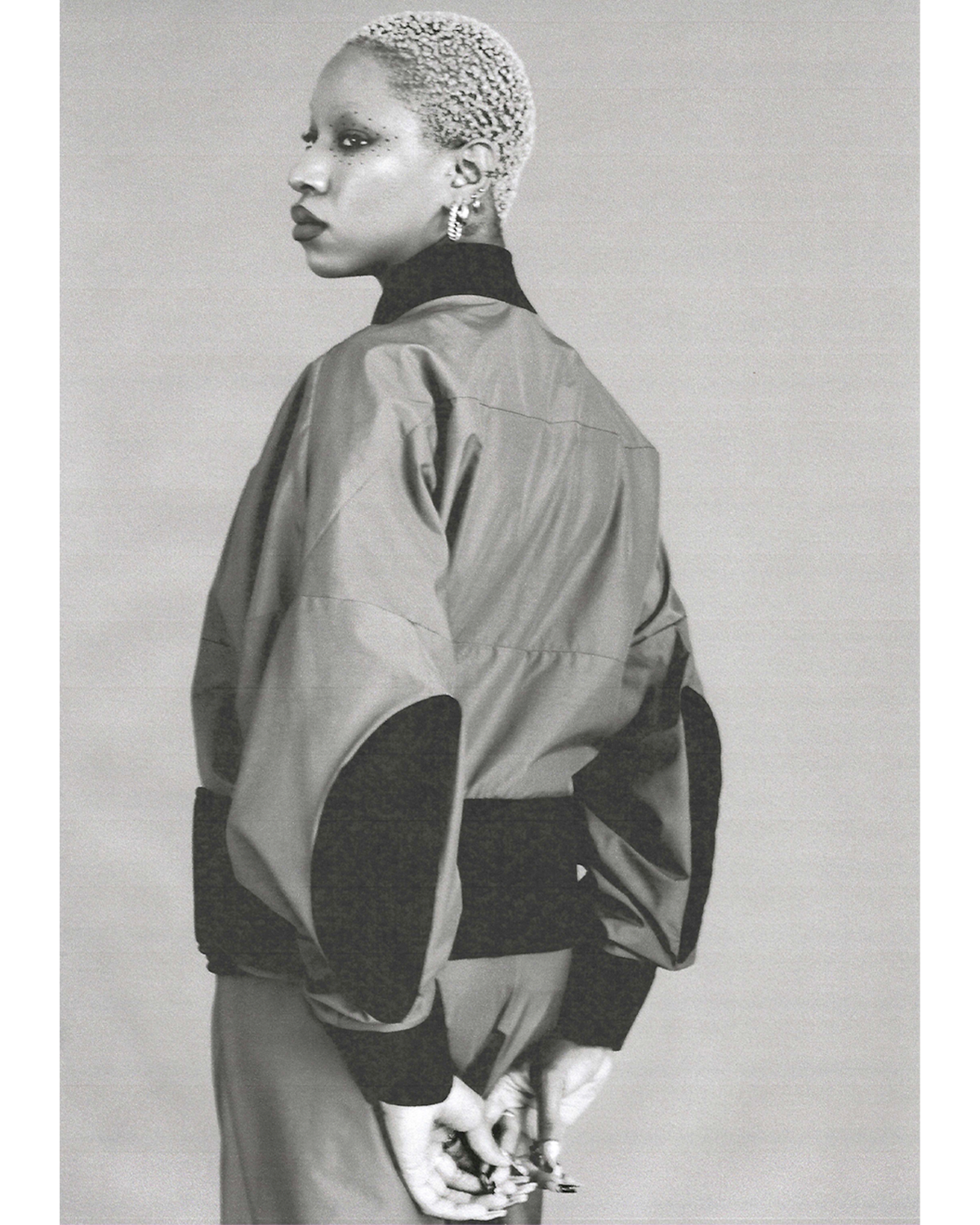
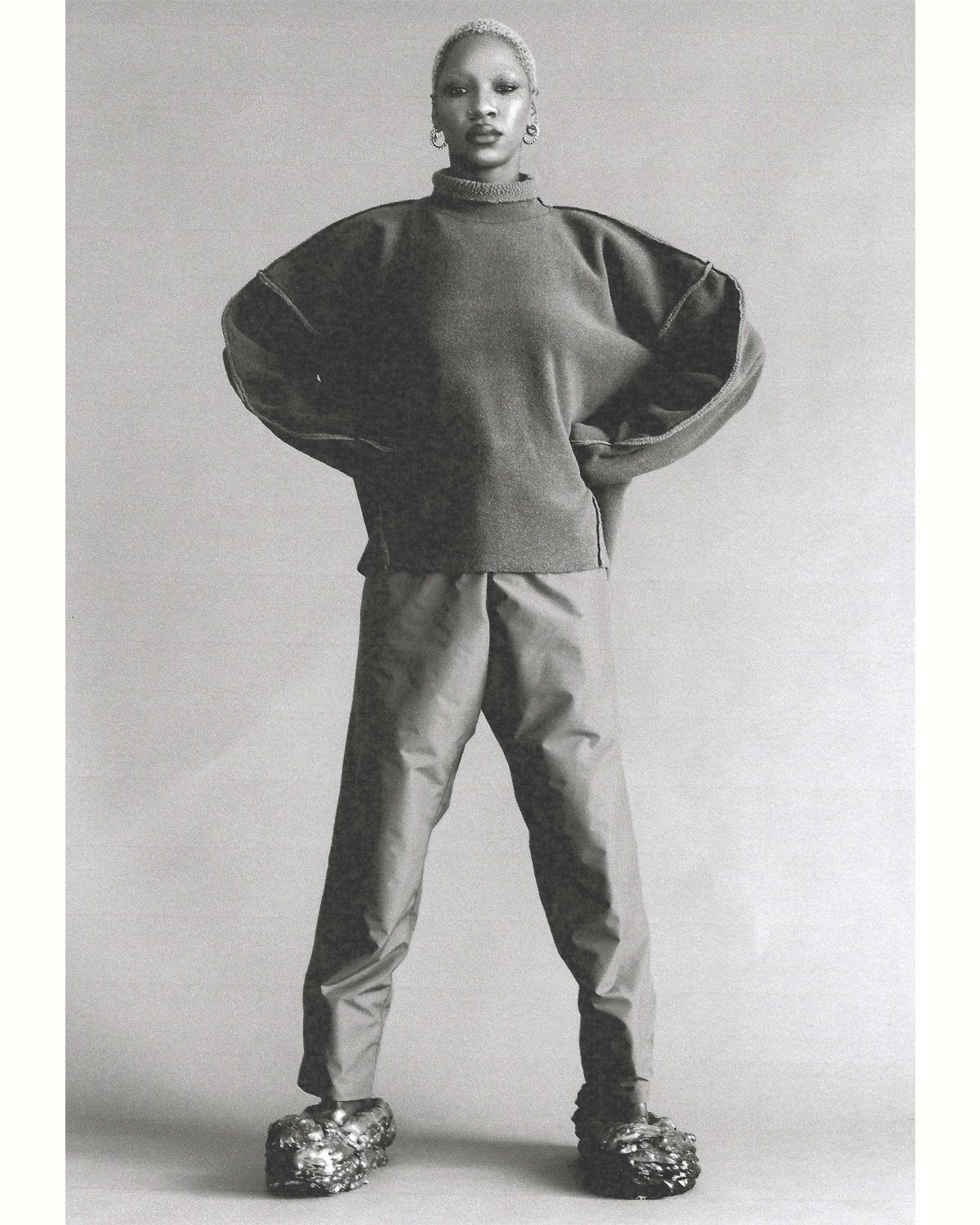
Do you see the work that you do as collaborative? And if so, what part of the process is collaborative?
Right now the concept phase of my design process begins and ends with me. So the research that I do and the garment ideas that grow out from that stage are all on me. Eventually, I would love to build out an internal design team, that’s a dream of mine that I’m working towards. If YEEZY taught me anything it's the power of having a collaborative design process. However, I do have a very good network of professionals that helped me make clothes; pattern makers and sewers, and so on. My production process is highly collaborative. I'm very blessed and lucky to have that. It took a very long time to be able to get to the point where I could, you know, work with these people. But that's probably what I'm most proud of right now is having established some of those relationships because I know how hard it can be to get them. But thinking outside of my own label, working with other brands and labels, I think that would be absolutely incredible. There are many labels, both young or established, I’d like to work with. One of my favorite collabs is Martine Rose x Napapijri. When they did that collab, I was just like, okay, this is it. These silhouettes are crazy. These colors are crazy. The campaign was crazy. It was a cool way for them to put their brands in a space they normally wouldn't be in. I think I would love to collaborate and work with other fashion designers and other artists in different industries and also different organizations. I’m very excited about the work I’m seeing from young graphic designers and fine artists and I think my label can fit in this space in some capacity.
Any more insight into your upcoming collection?
The collection is called Soft Armor. I mentioned that none of the clothes have zippers or buttons and it was really challenging. It forced me to hone in on construction and function. I wanted the silhouettes not to be exaggerated but to be more shapely. In one of the images that I shot, there's a sweater where I tucked and rolled the fabric in a certain way, and stitched it down to where it makes the person look bigger than what they are. And that was based on a Puffer Fish. They inflate to look bigger than what they really are to scare predators away. During the first shutdown, we were getting bombarded with all this doomsday nihilism, and the protests were going on. Everybody was in a really down place.
People need protection from that. How can I make it? What's my breastplate look like? What's my sword look like? What is my shear, and that's kind of how the conversation started? How can I manipulate these fabrics to say, 'Don't fuck with me,' but not have to write on the shirt? 'Don't fuck with me.; It's just creating these soft armor pieces that function differently, that have a unique shape to them. And kind of quietly signal to a futurist ideal. That's what I've been aiming at.
—
Nowadays, it's really important to shout out inspirations or people who inspire you. I just want to do a quick roll call of artists, musicians, and painters who all have helped guide my ideas and thoughts. First and foremost, Kerry James Marshall. He's a Black painter based out of Chicago, and I listened to his lectures nonstop. They're always on repeat because he provides a lot of valuable information for young artists and how they can be successful in their own right. Edmonia Lewis is a Black and Native American woman who was a sculptor and the first to rise to international prominence. William Edmondson - He was another sculptor. He was the first Black artist to be featured at the MoMA in New York. Louisahhh - She is a techno punk producer and singer-songwriter. She's incredible. She's based in France. I've known her for a long time. She inspires me because she's fearless. LTJ Bukem - A legendary drum n bass producer and DJ. I love drum n bass and I soundtrack all of my work that I do to it. Source Direct - Another legendary drum n bass duo. And finally - Sam Gilliam. He’s a color field painter I admire not only for his abstract perspective but the large, confident scale he presents his work with.
